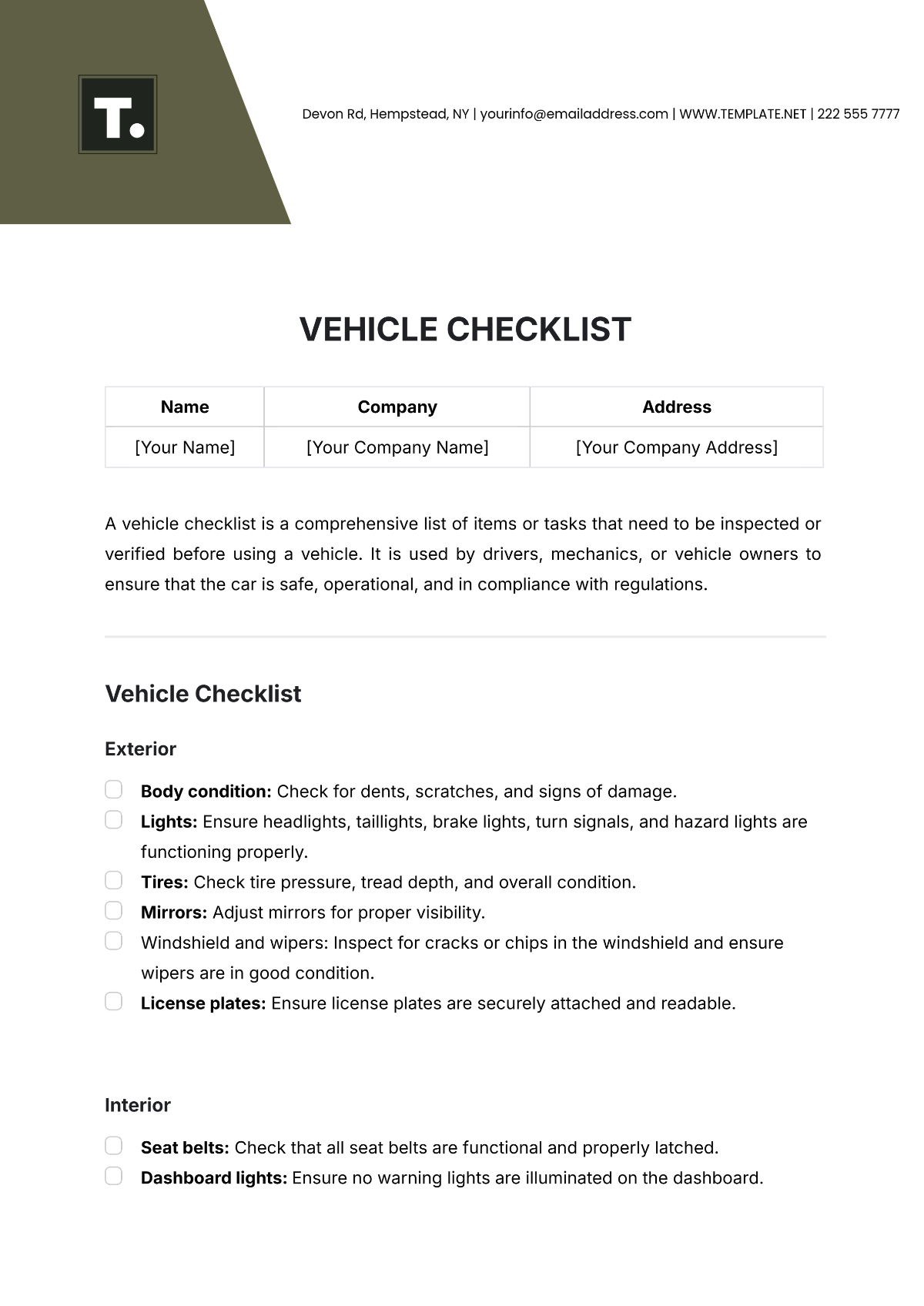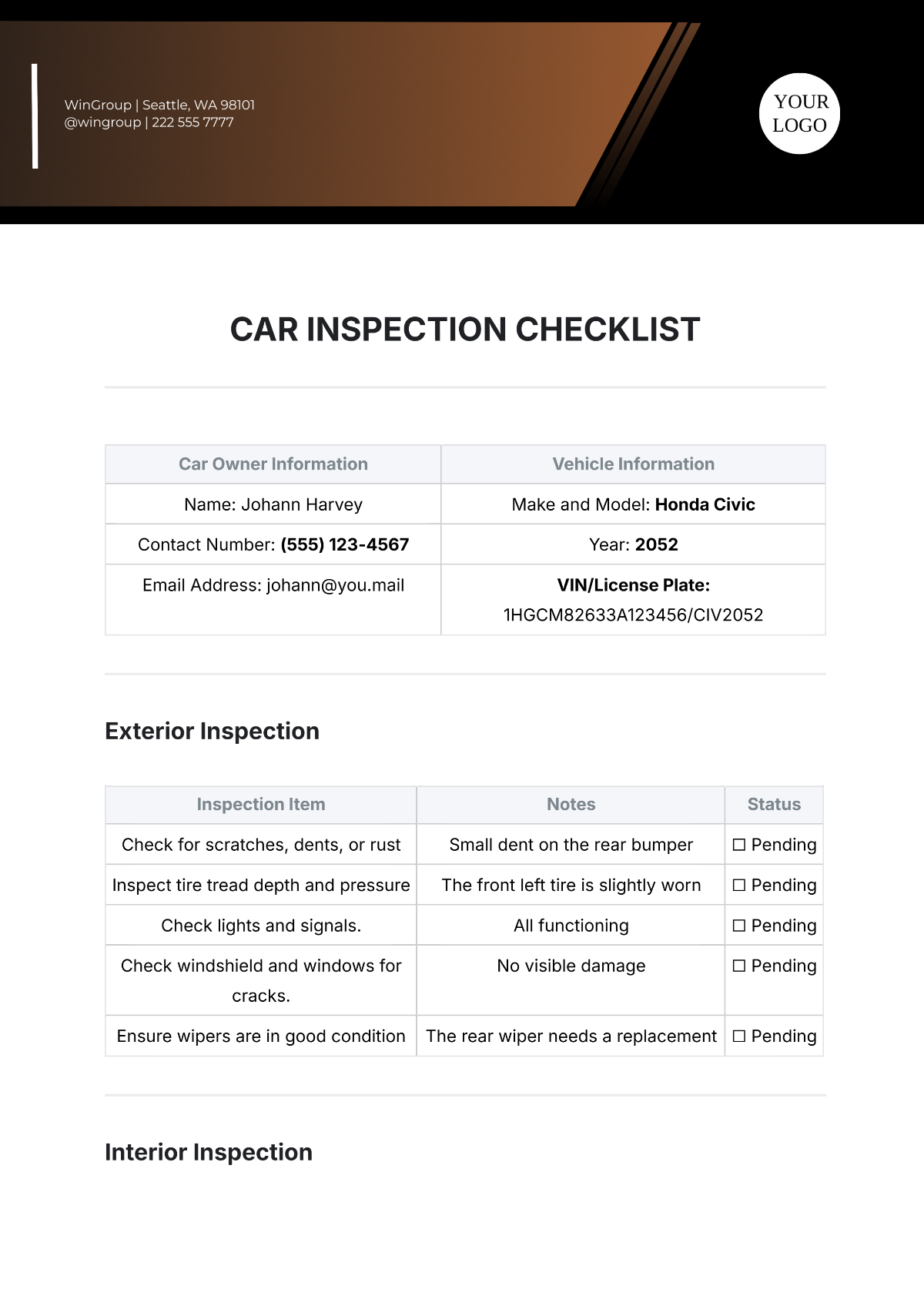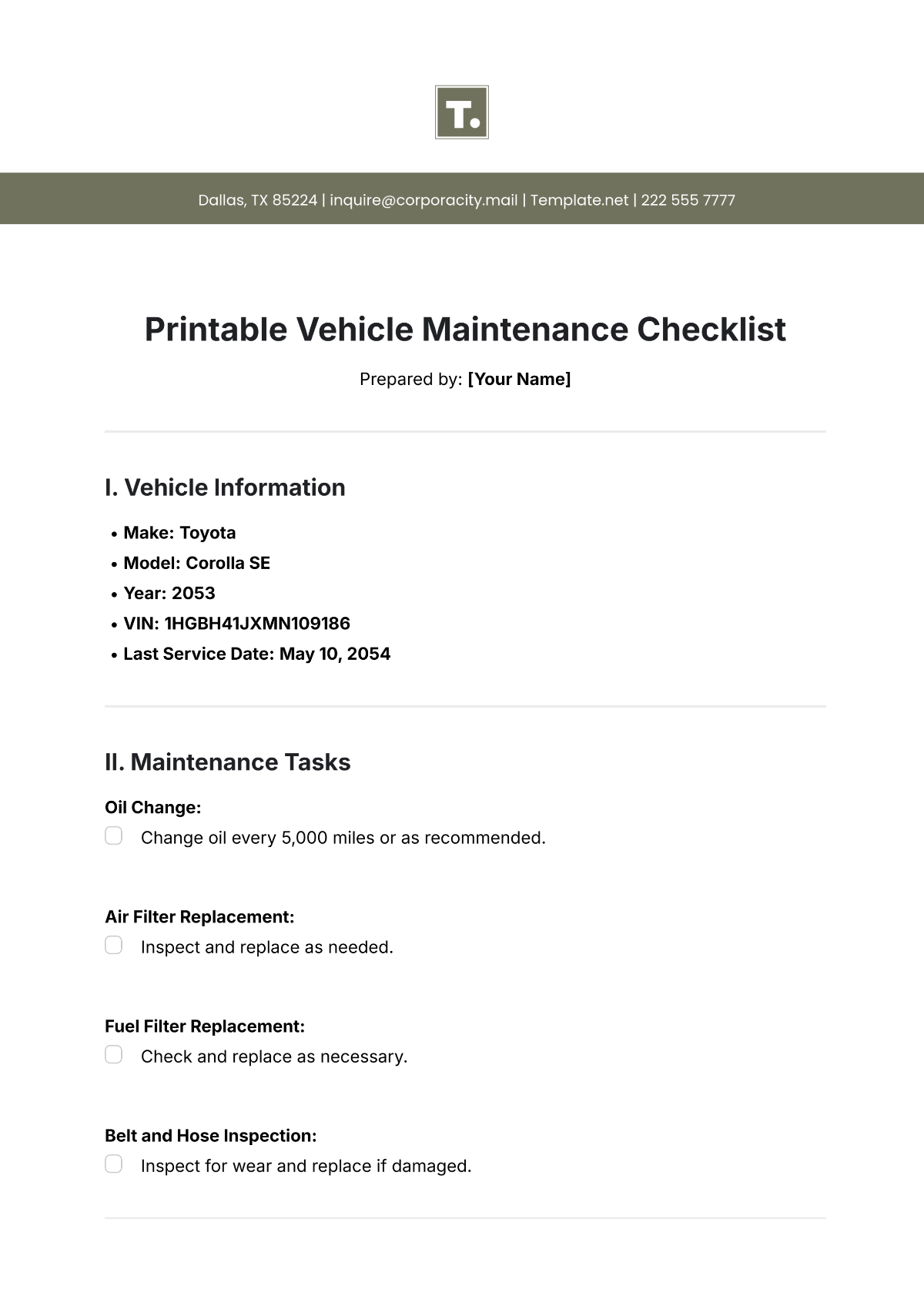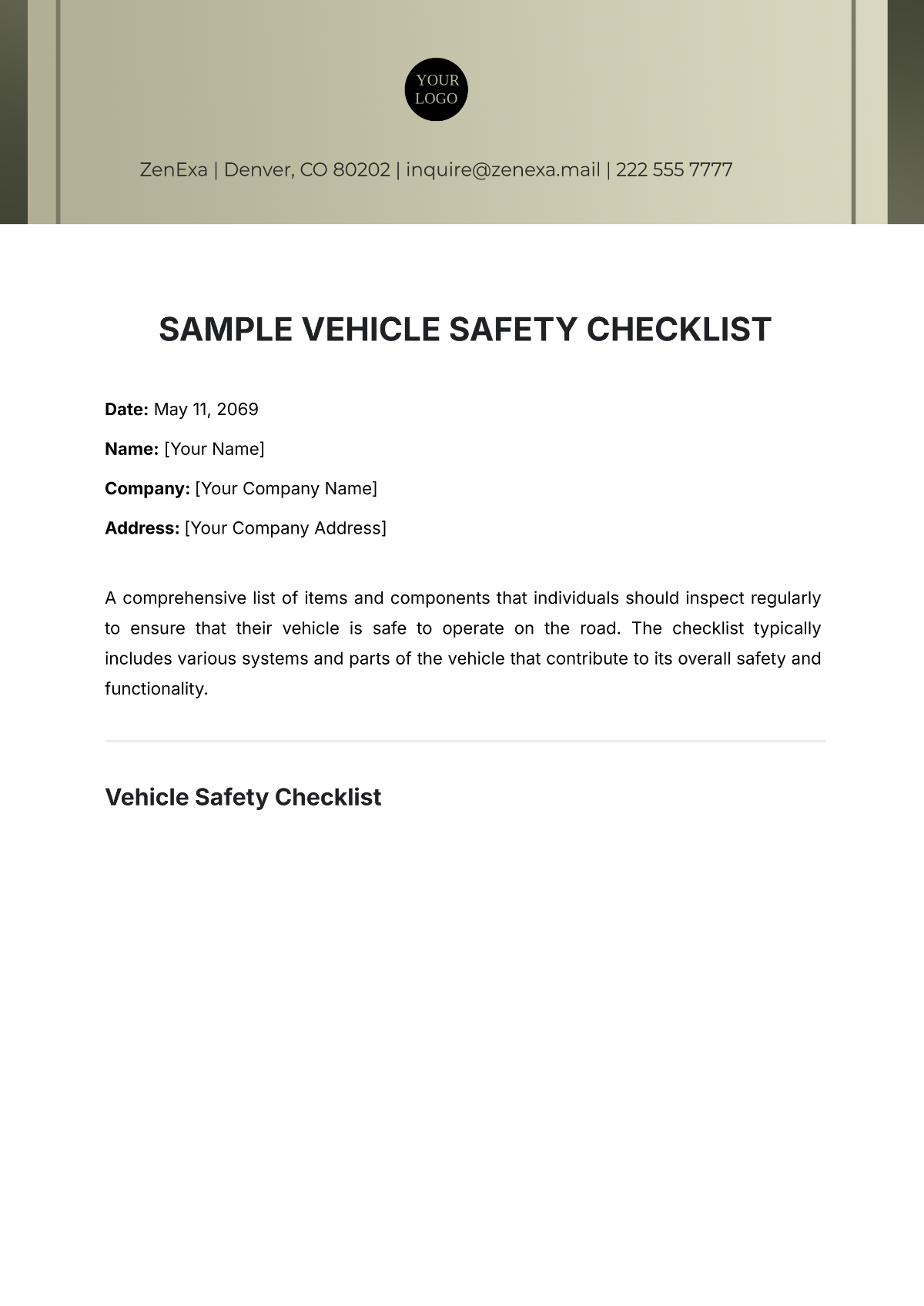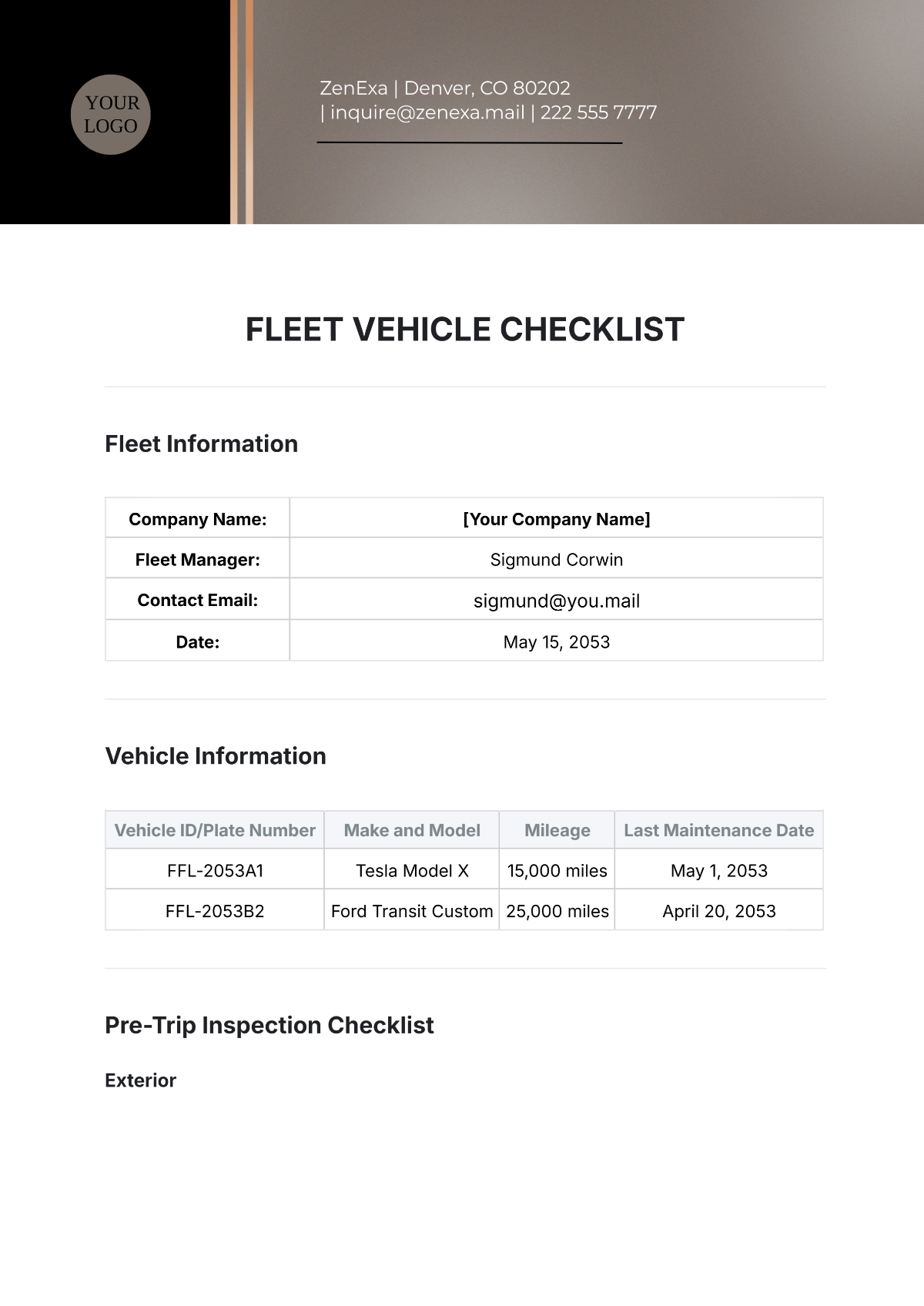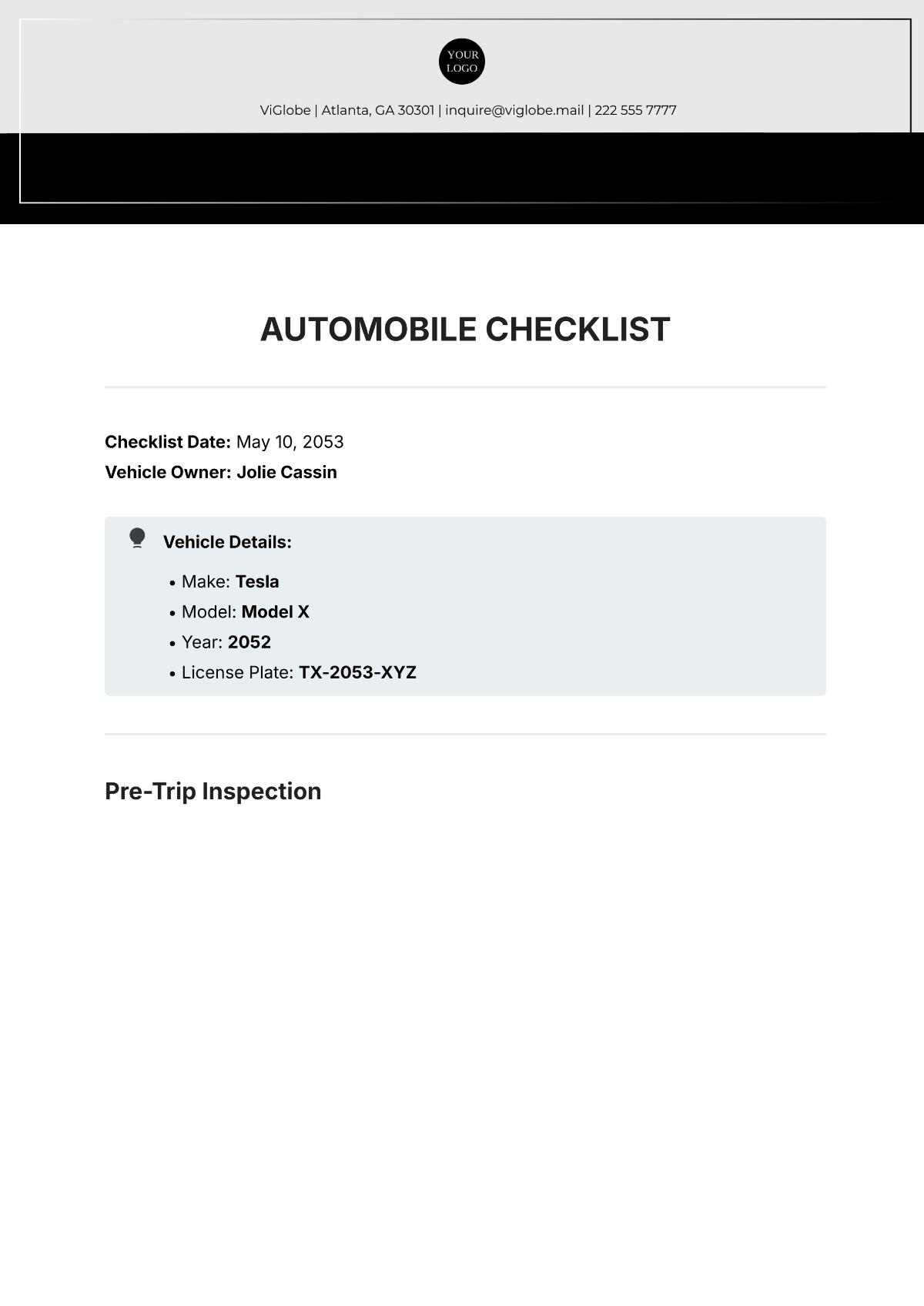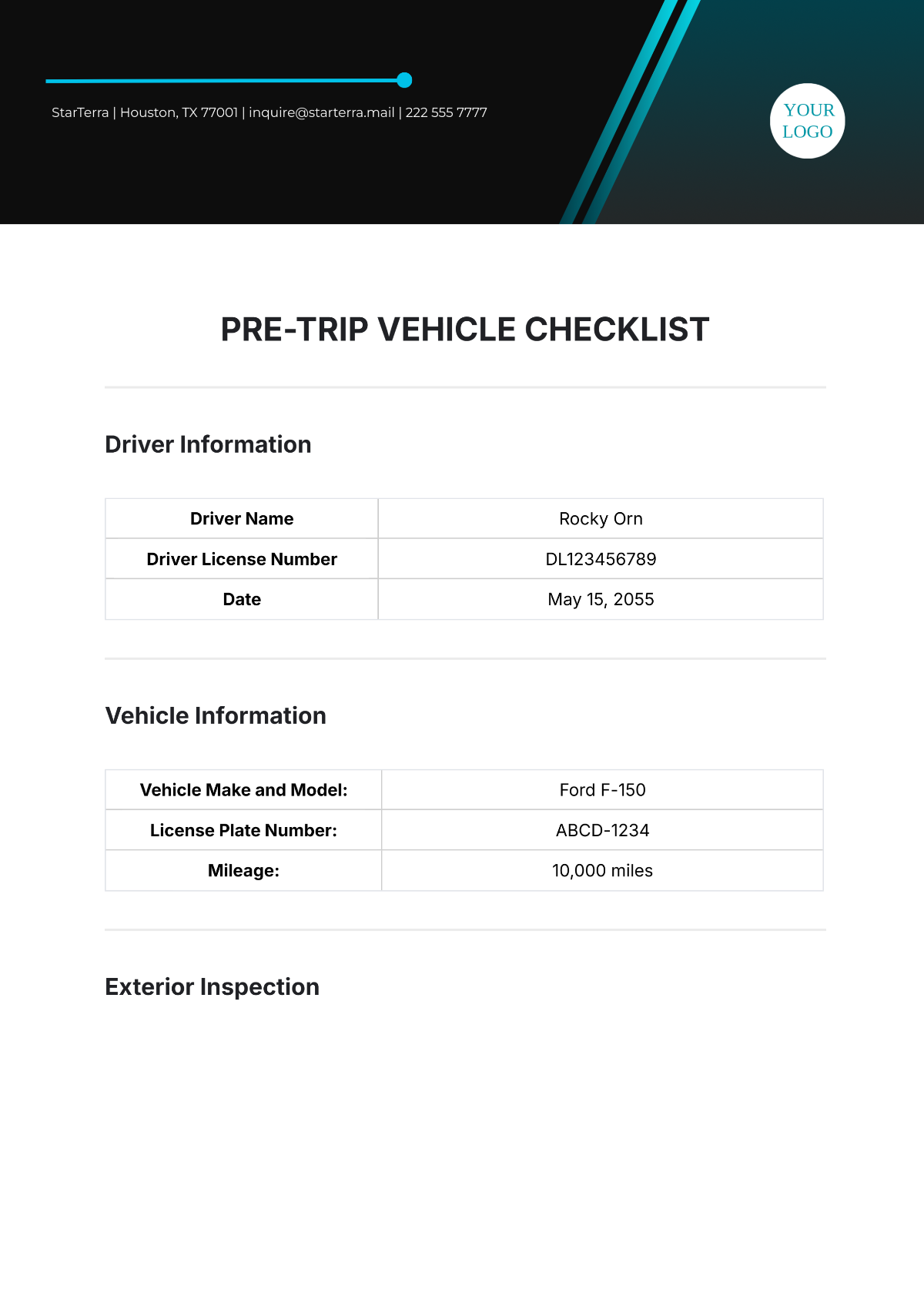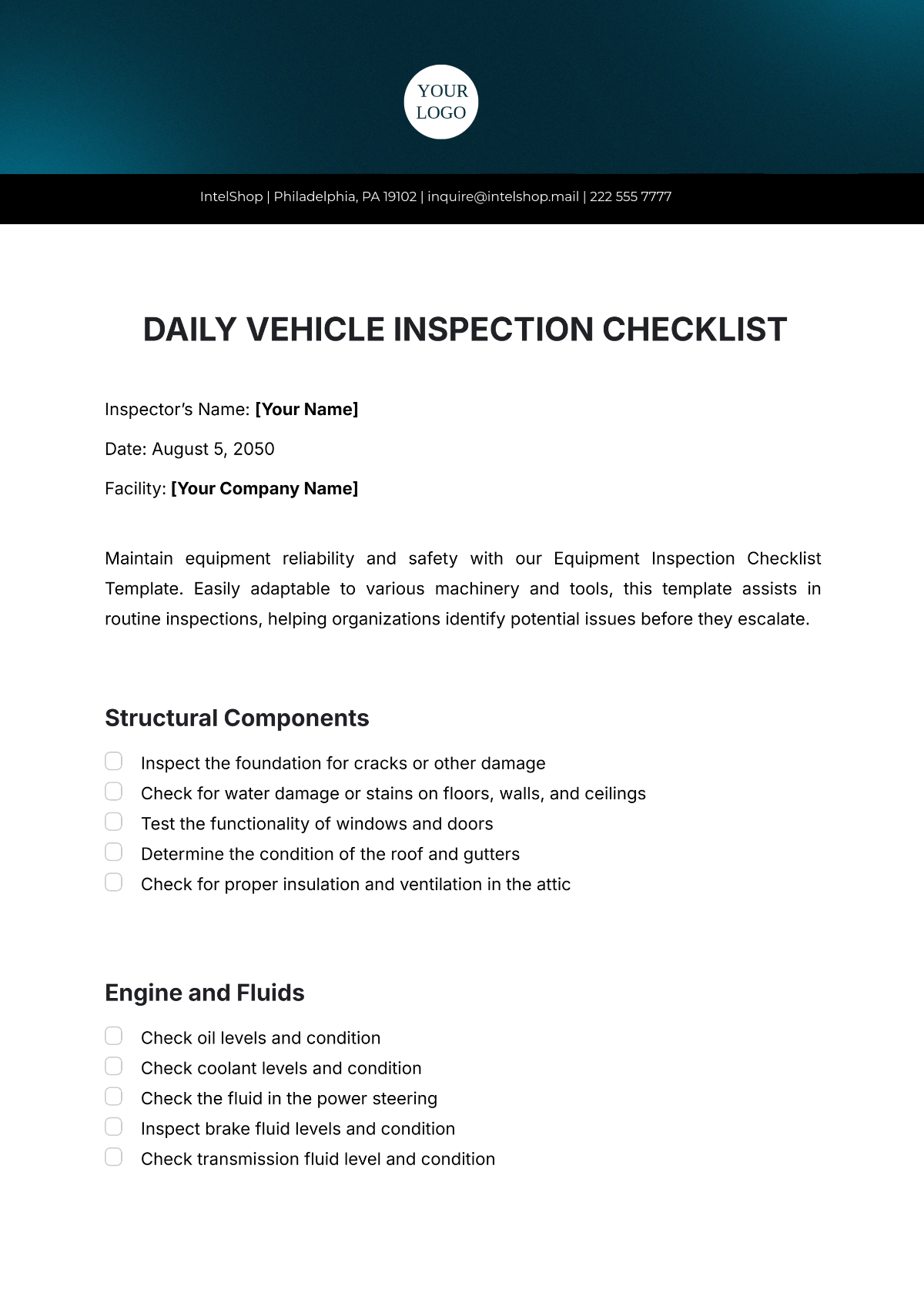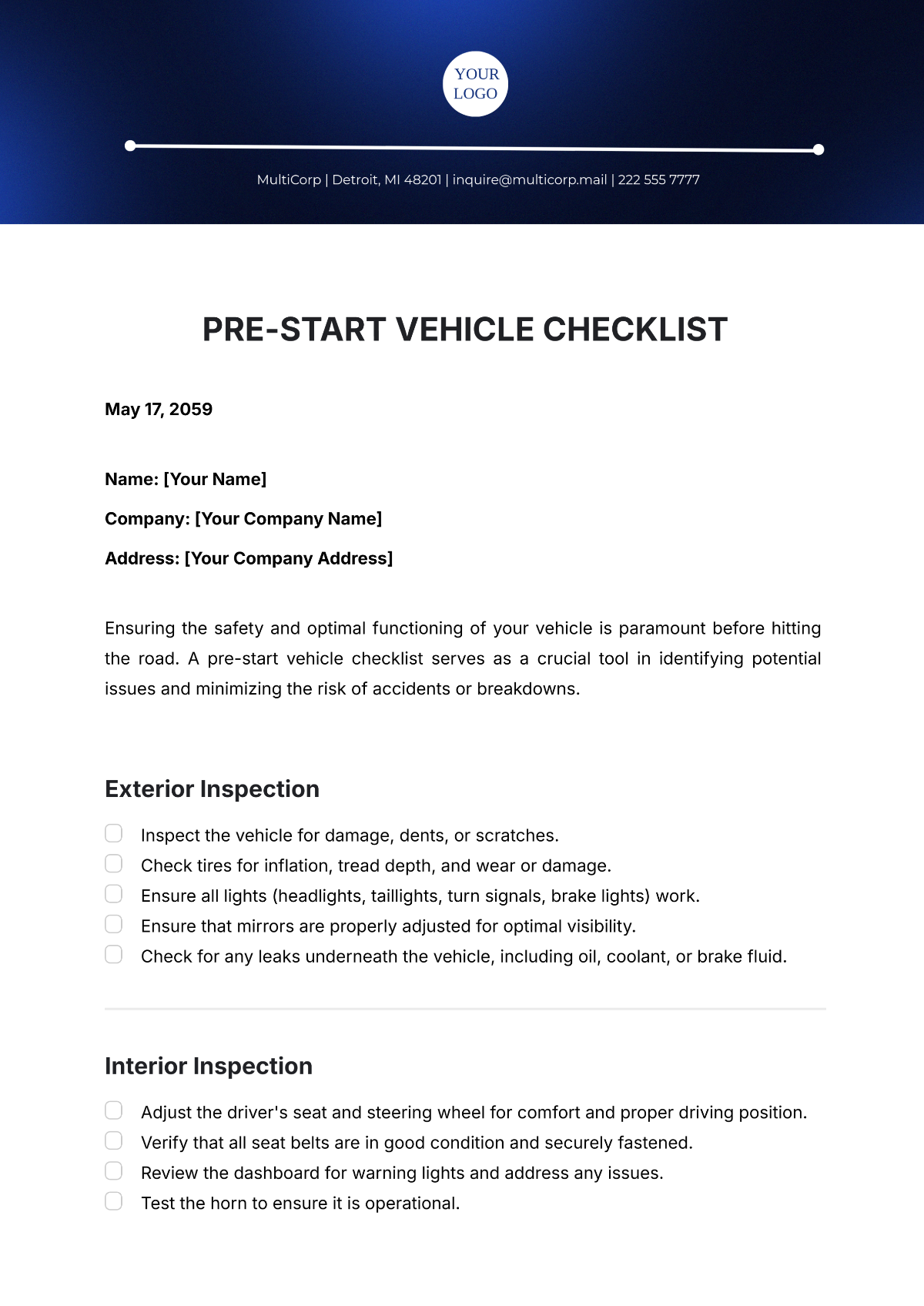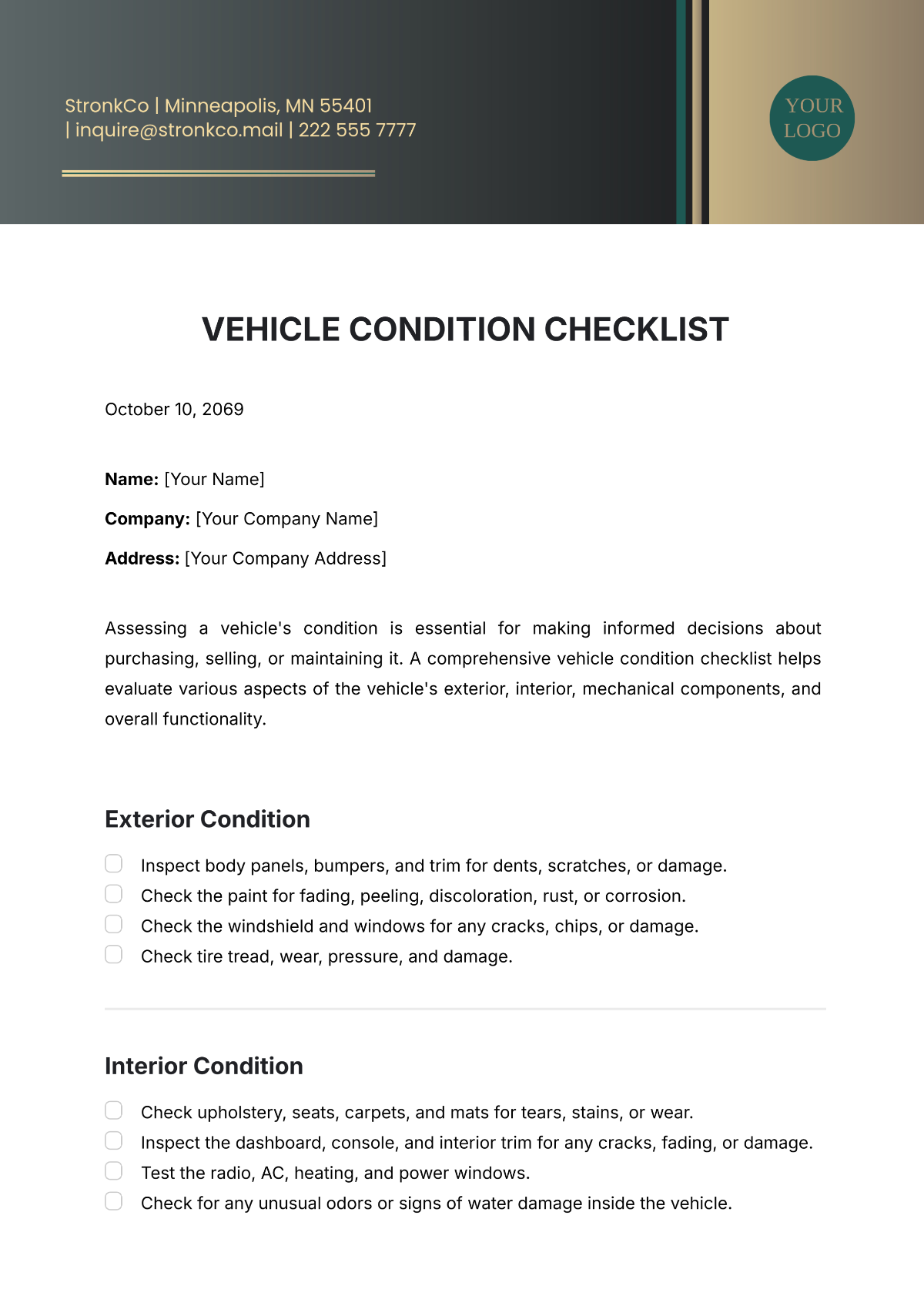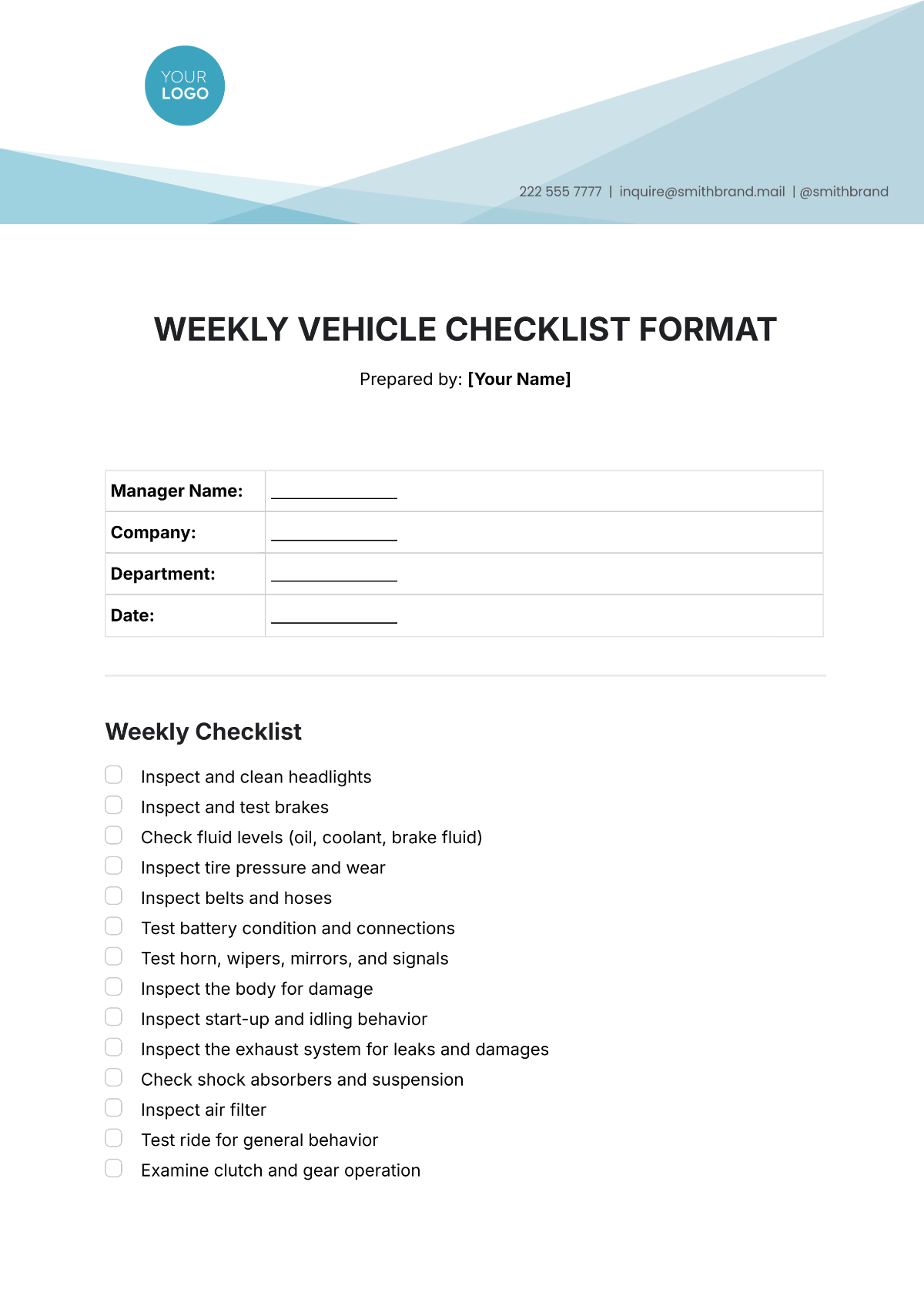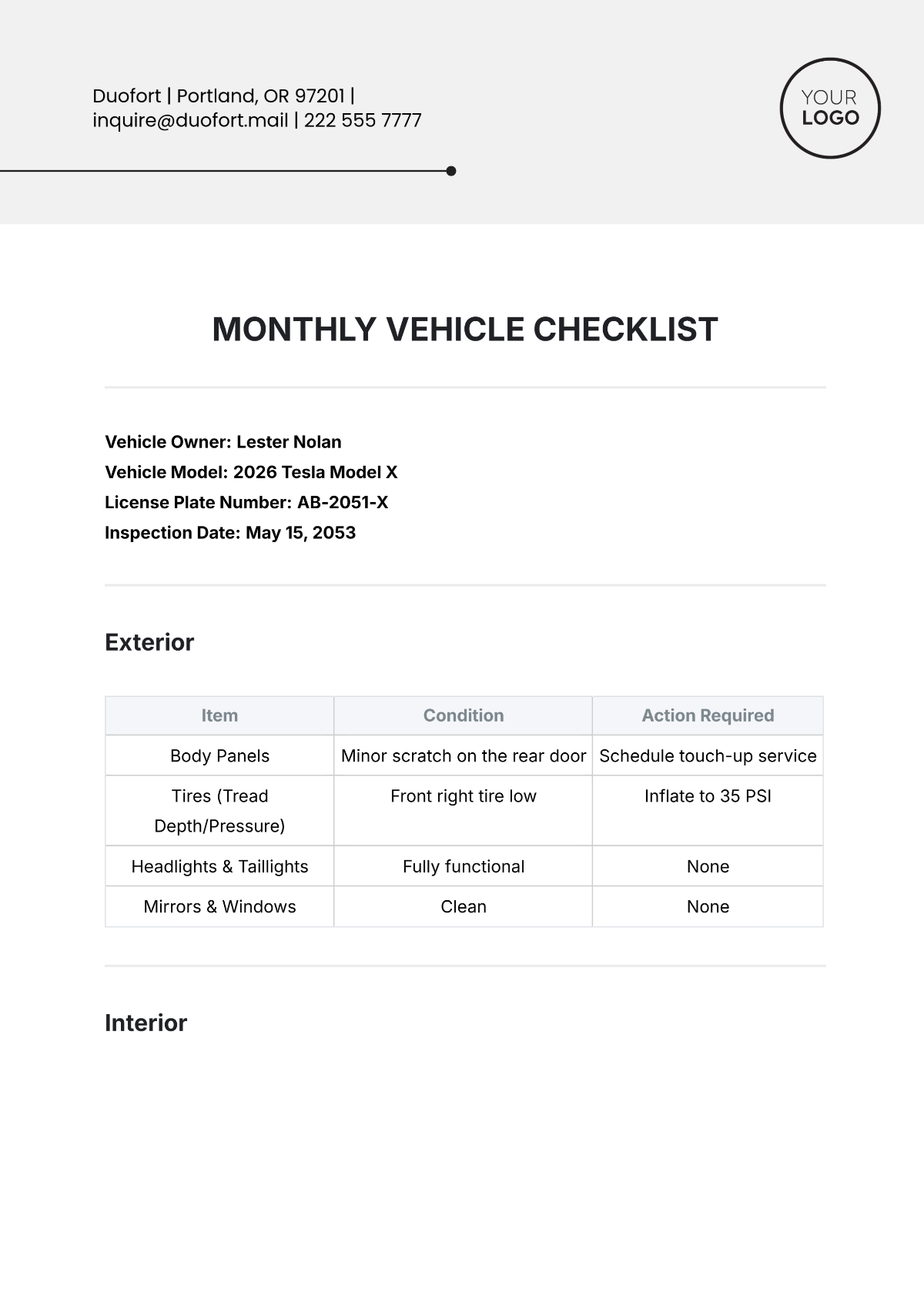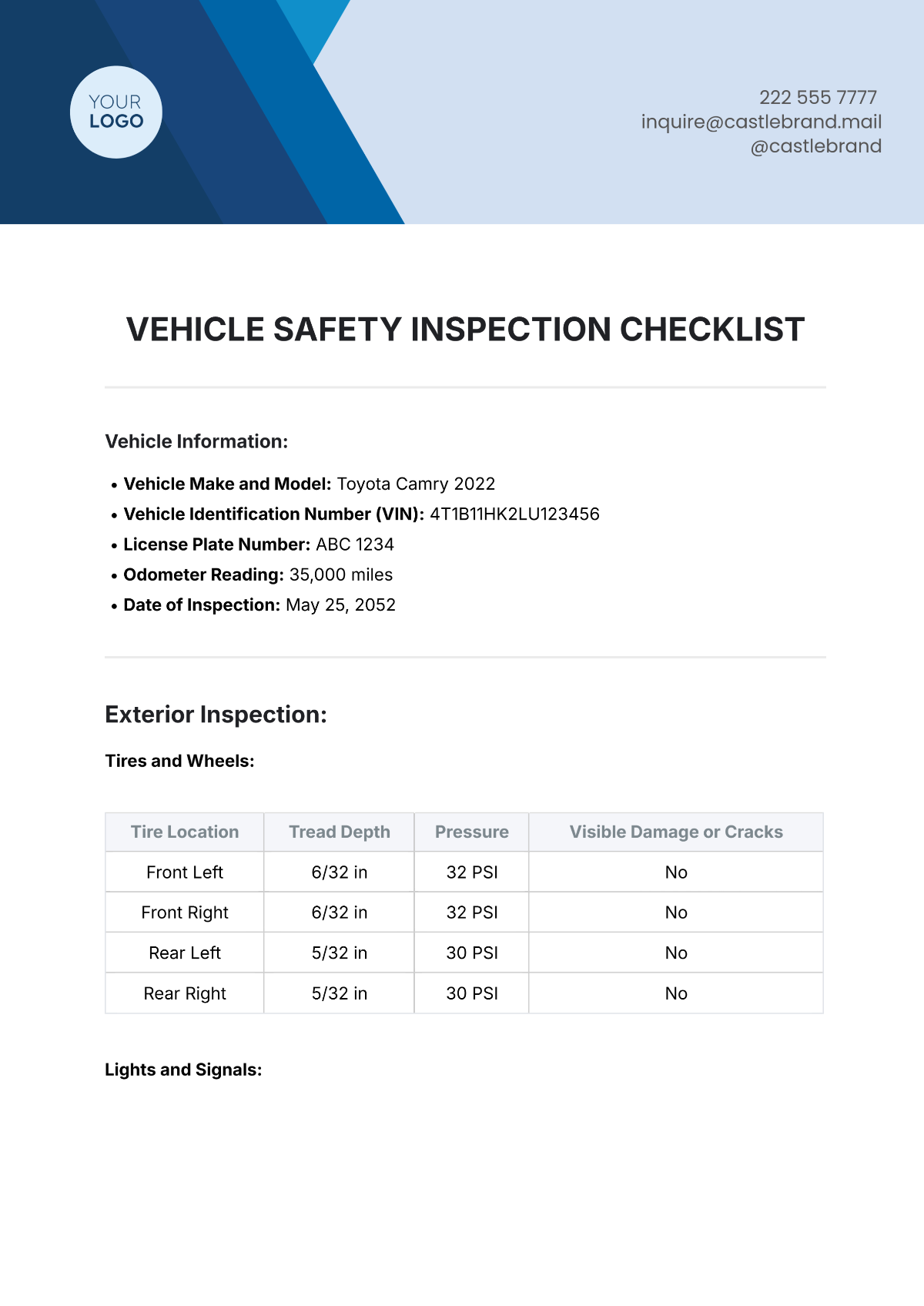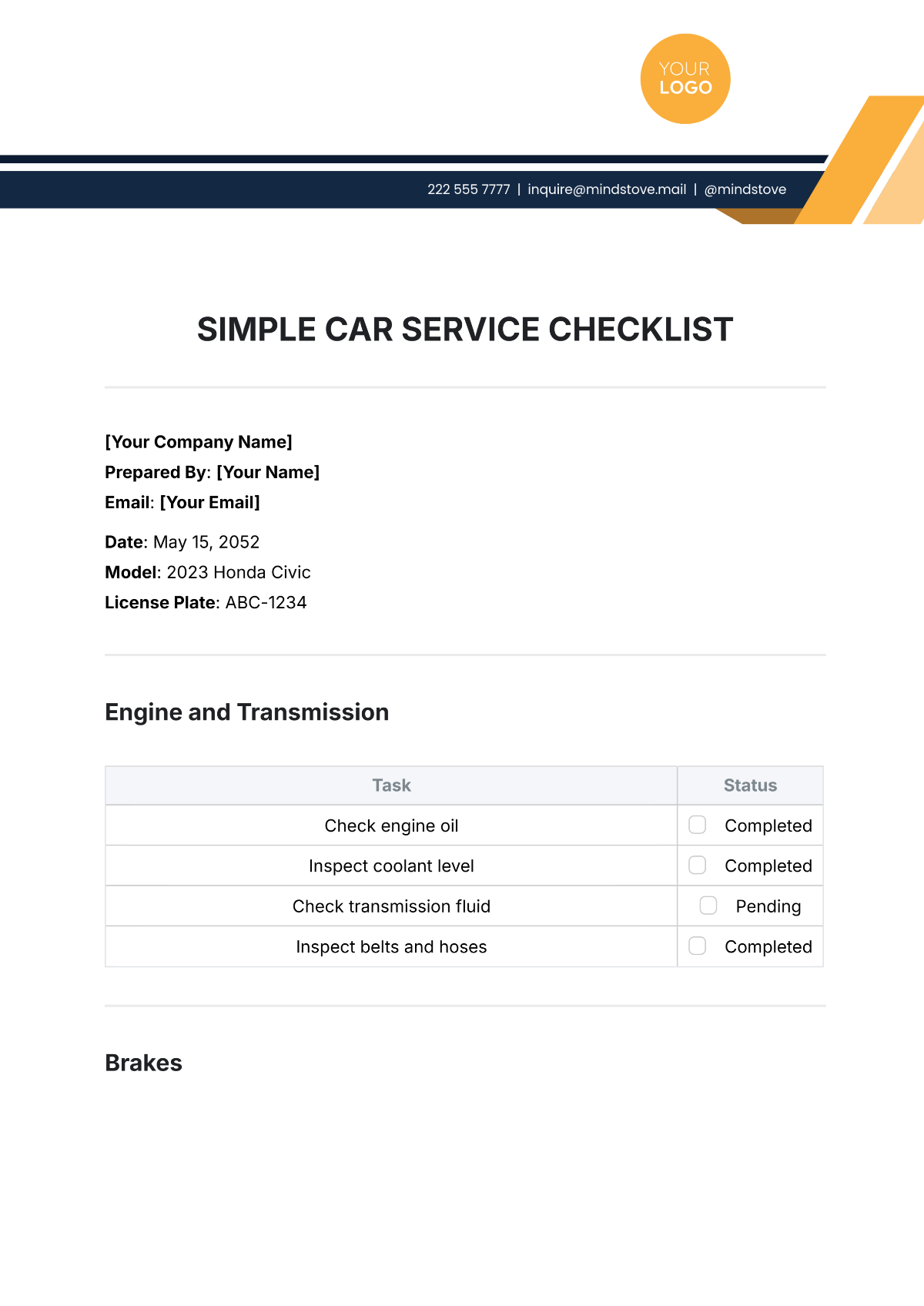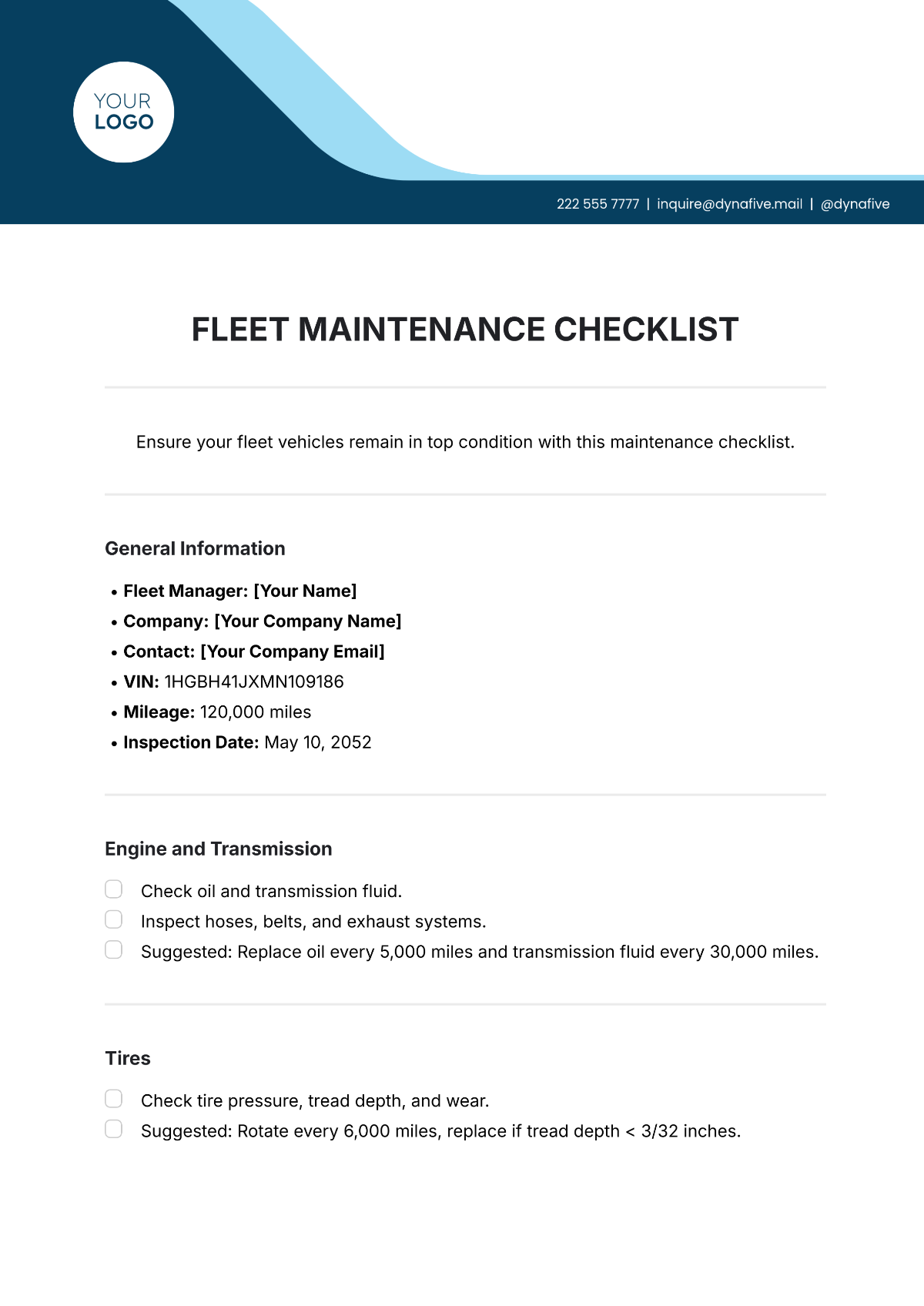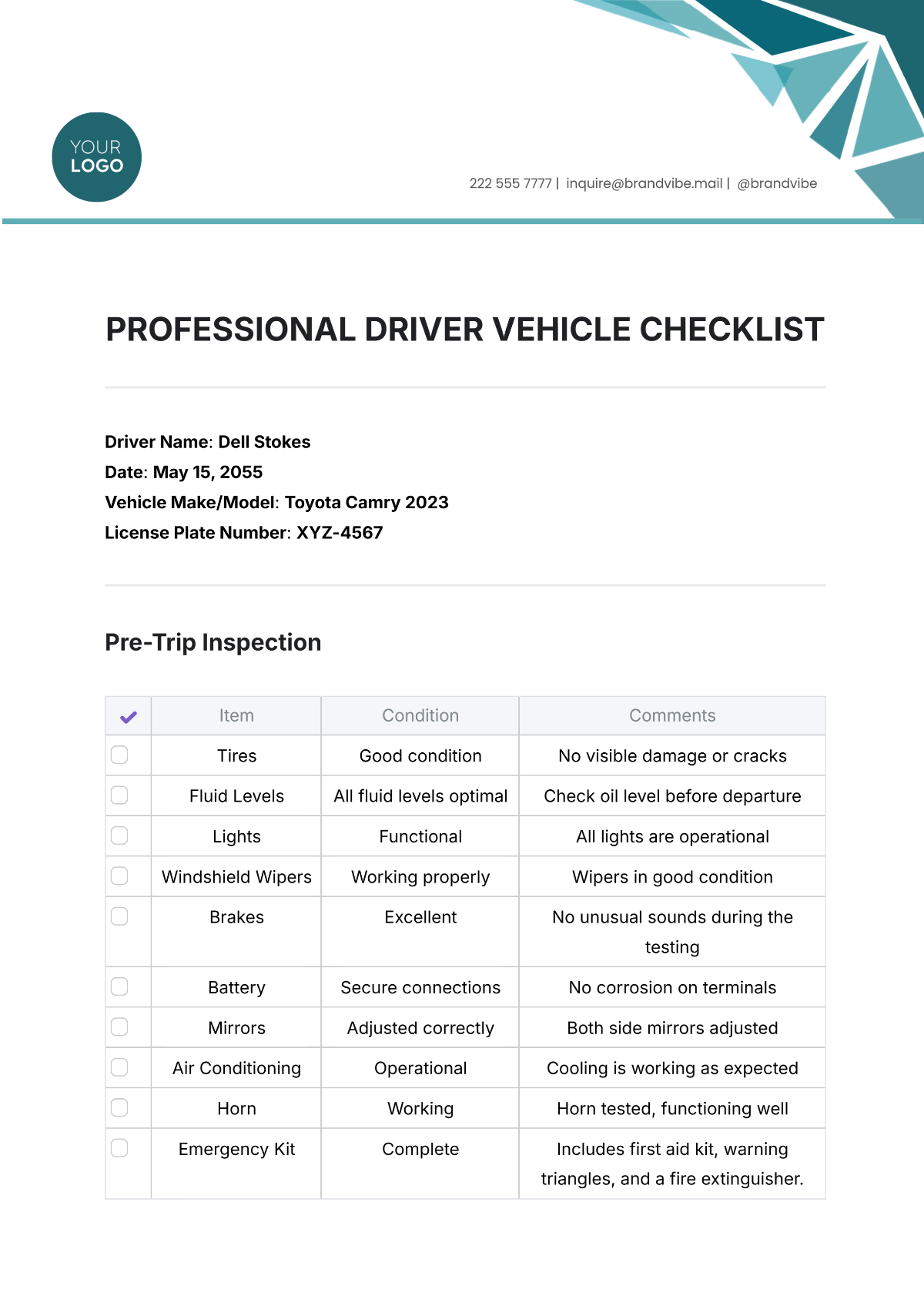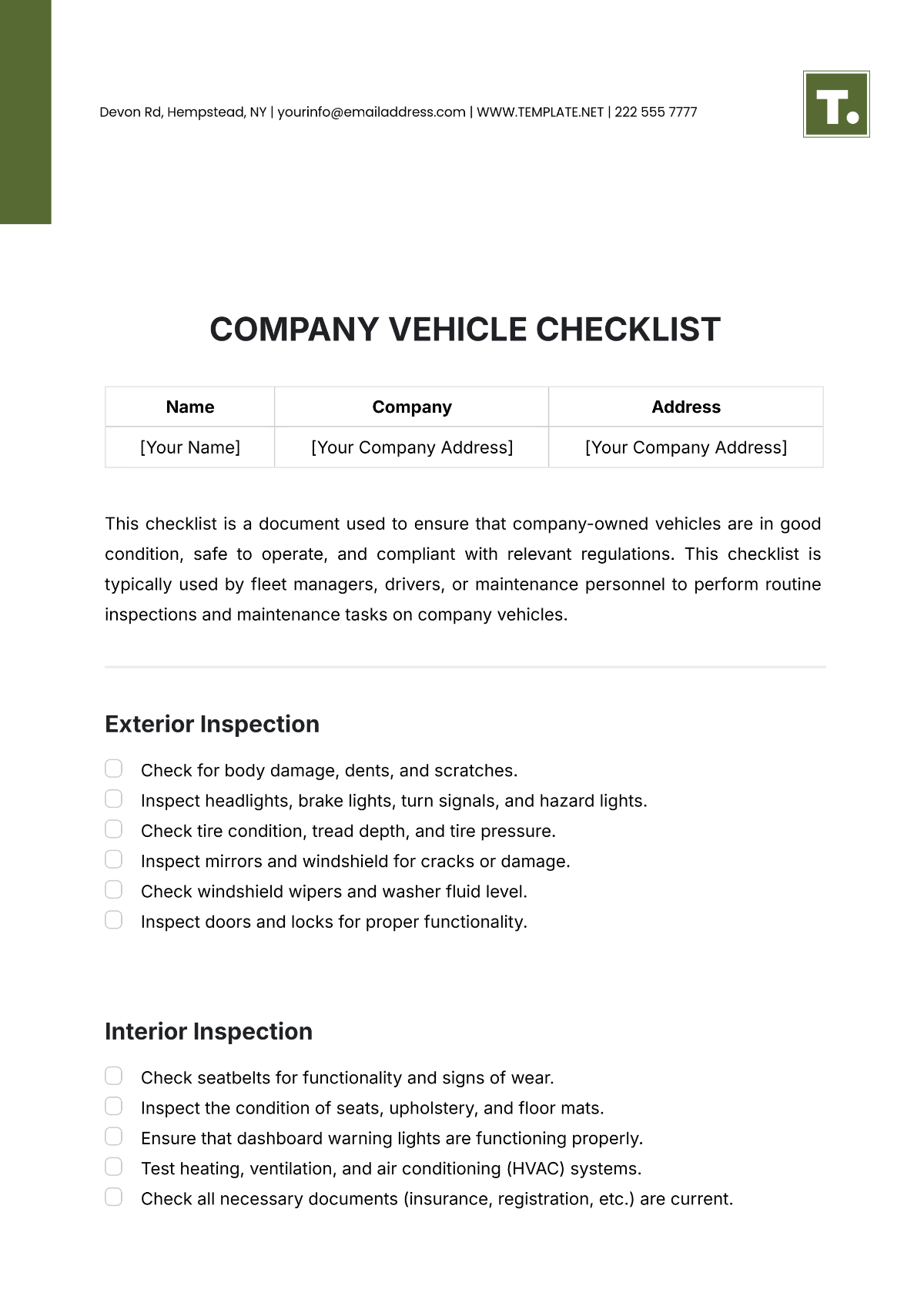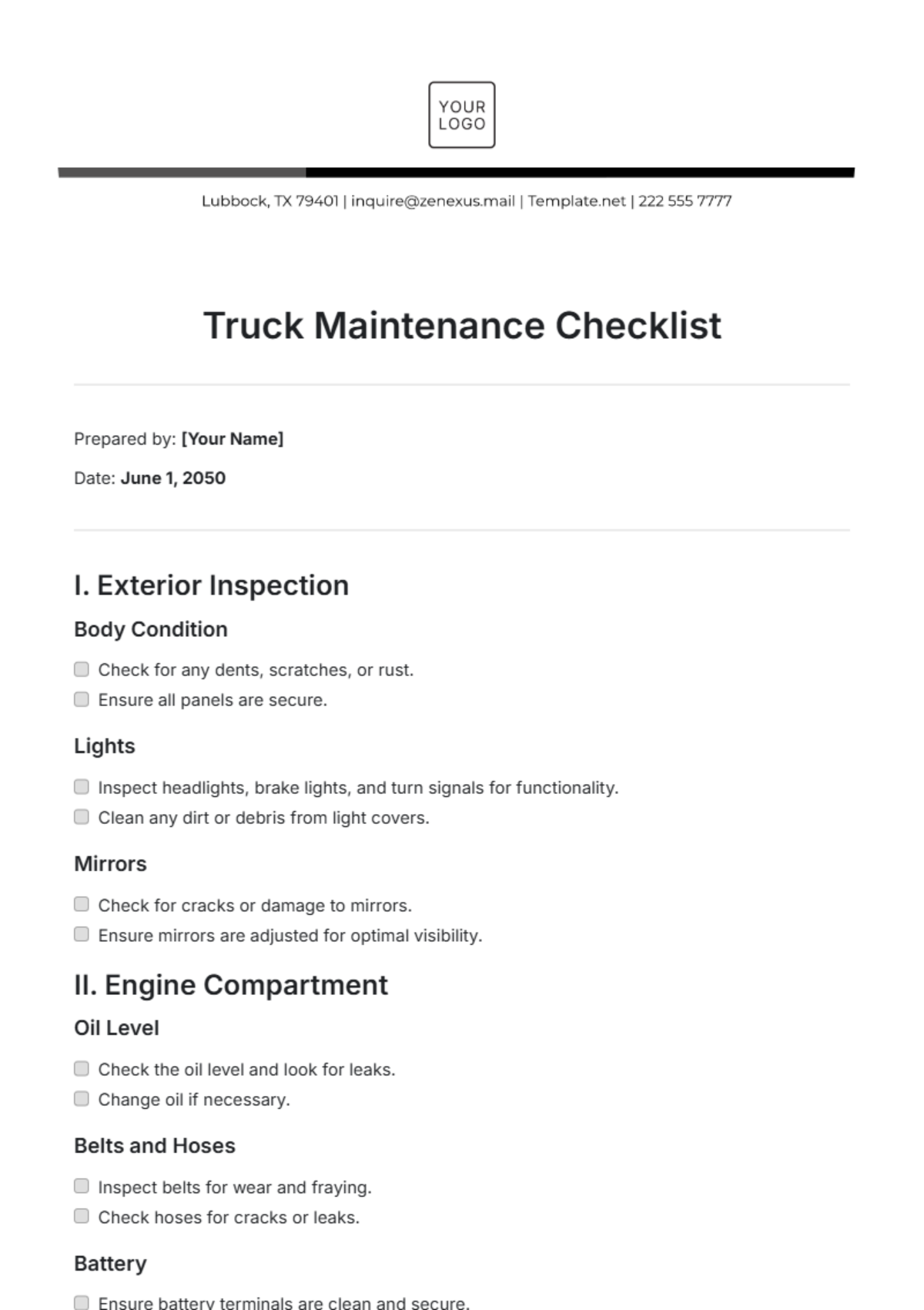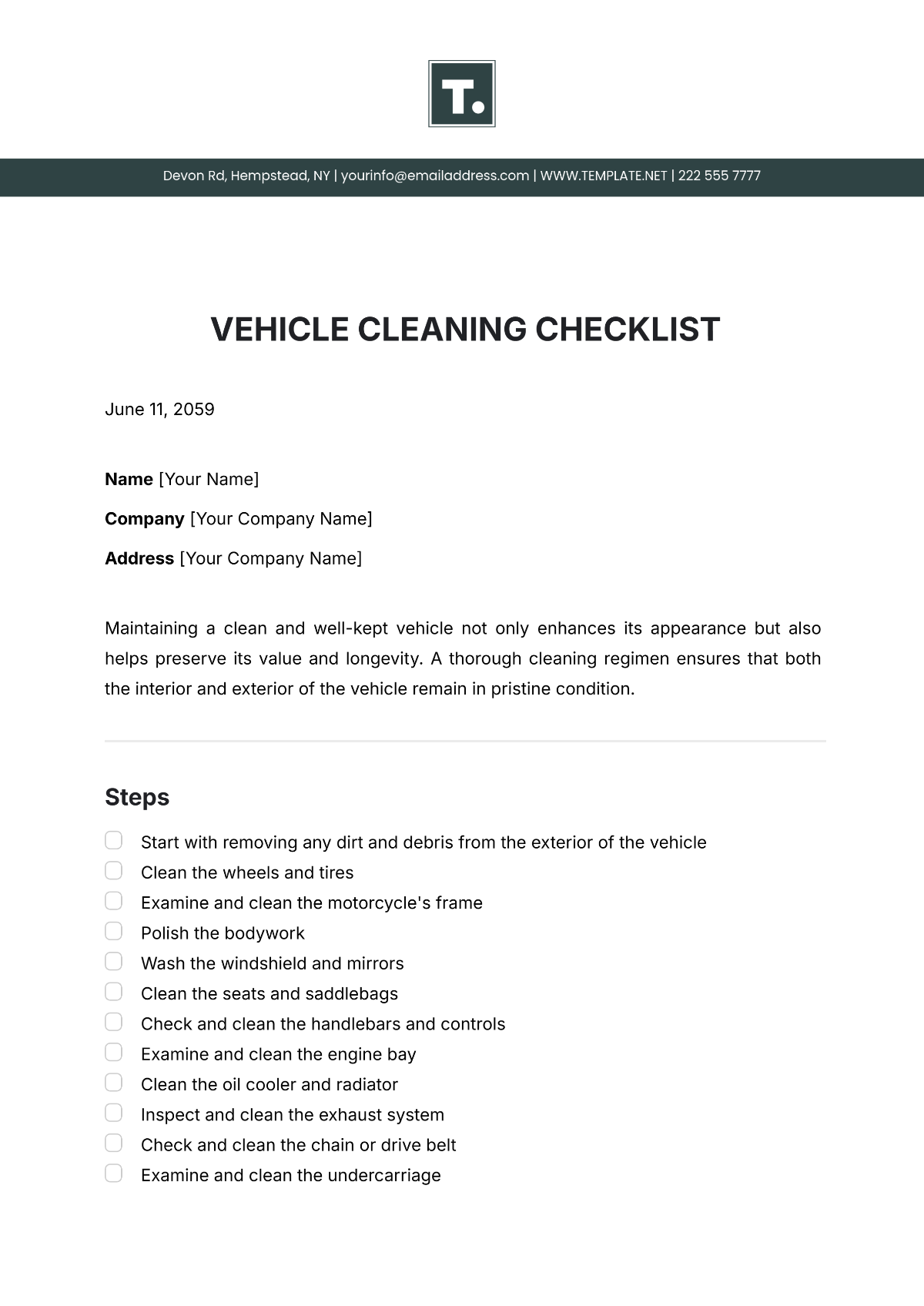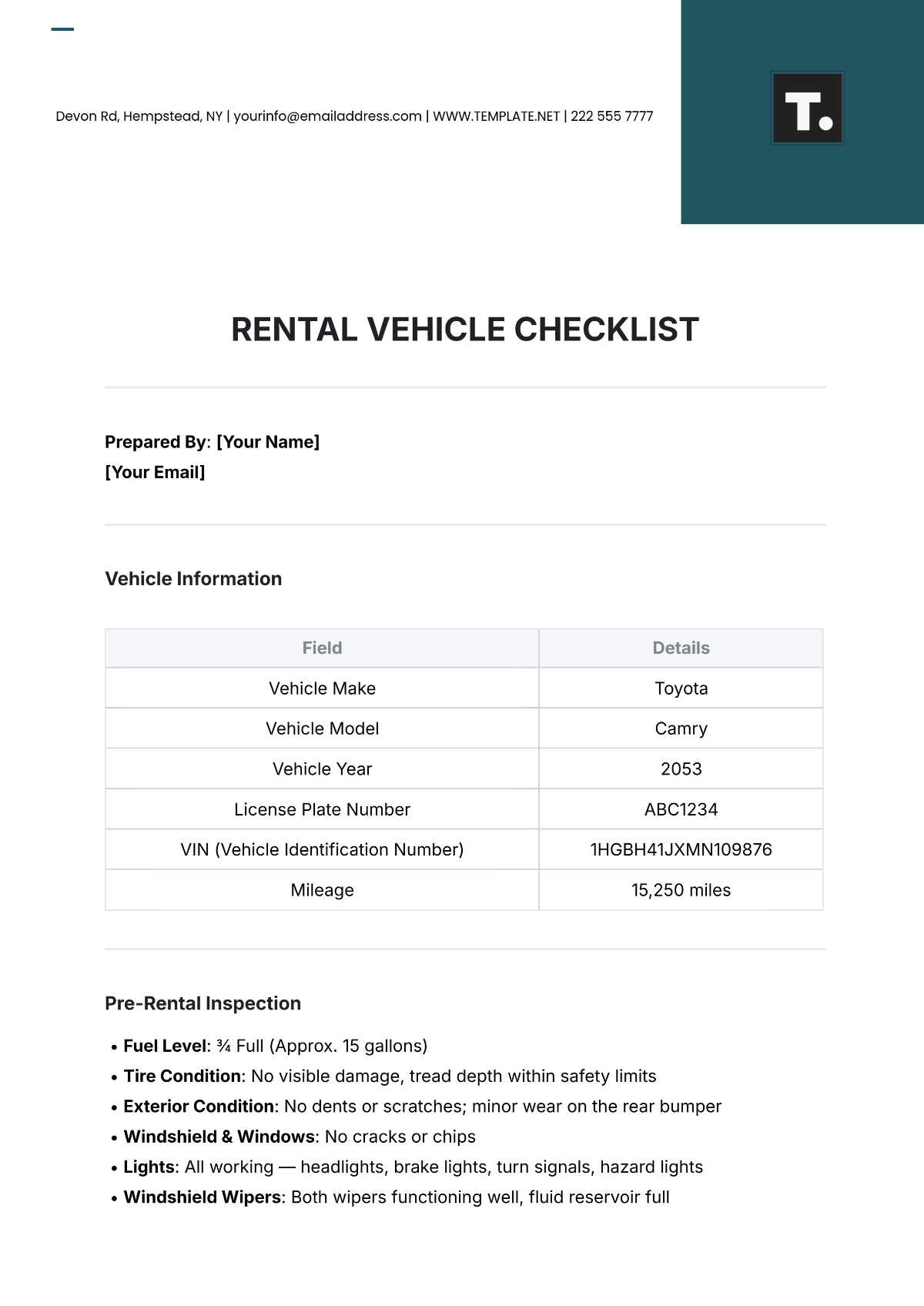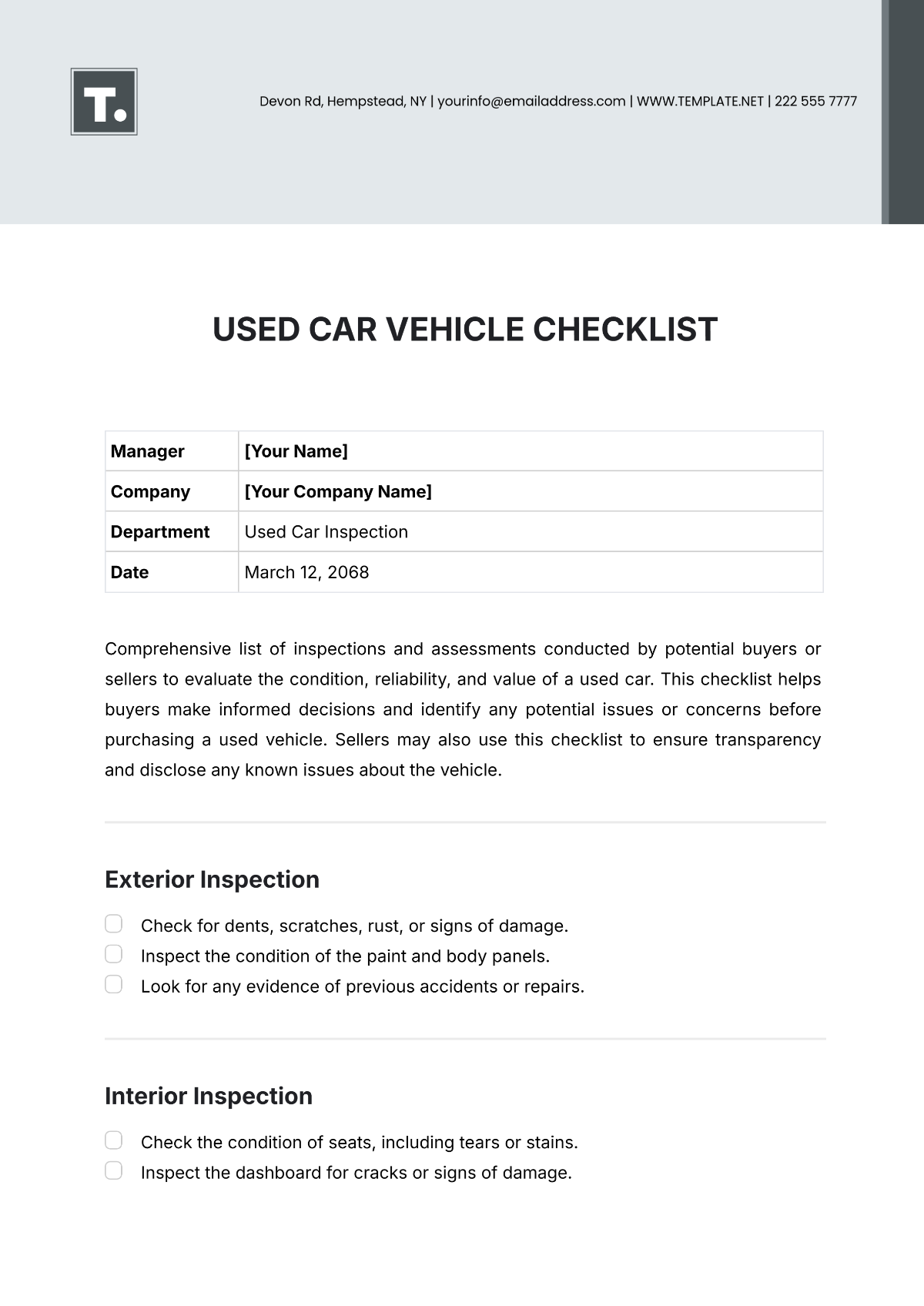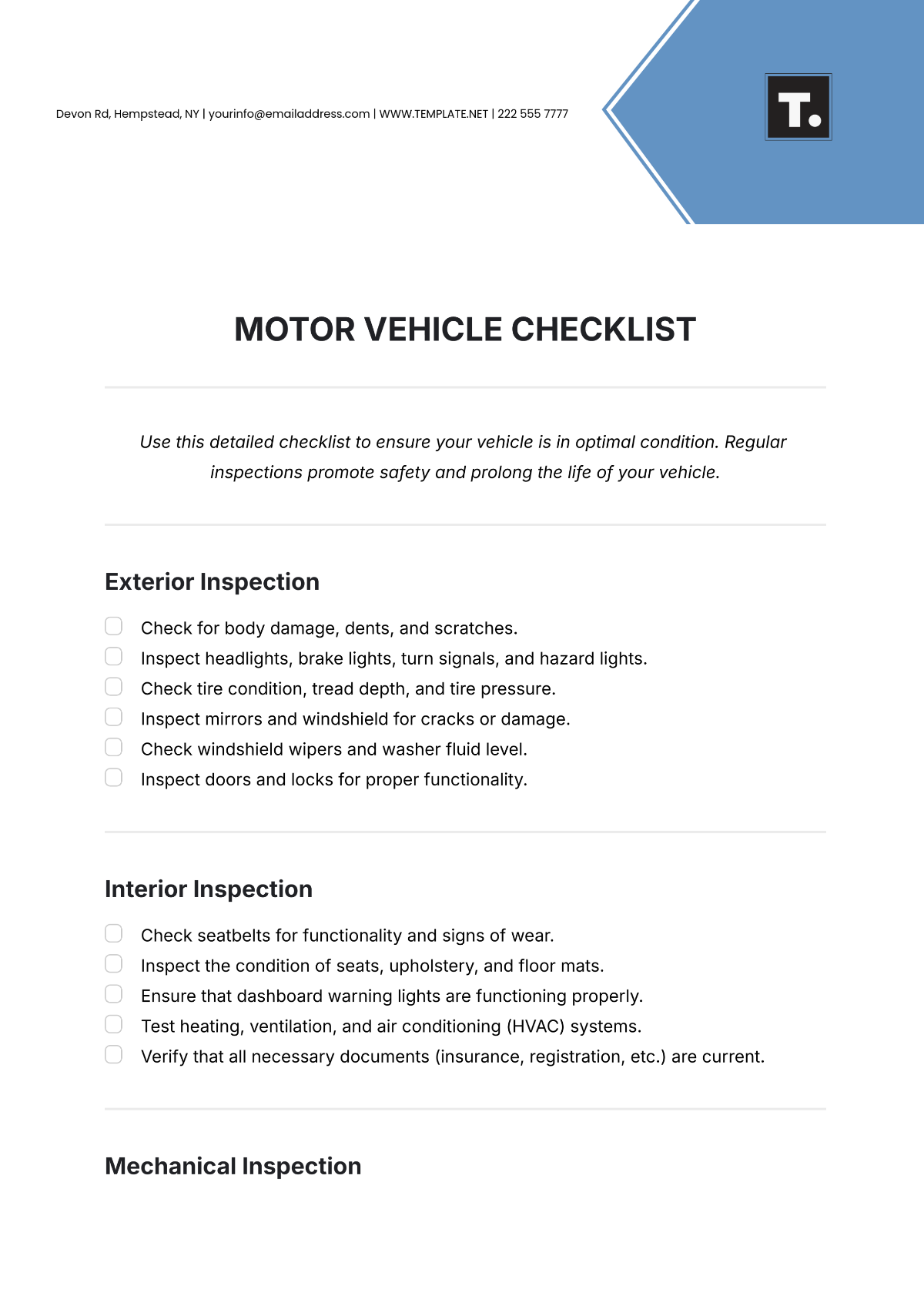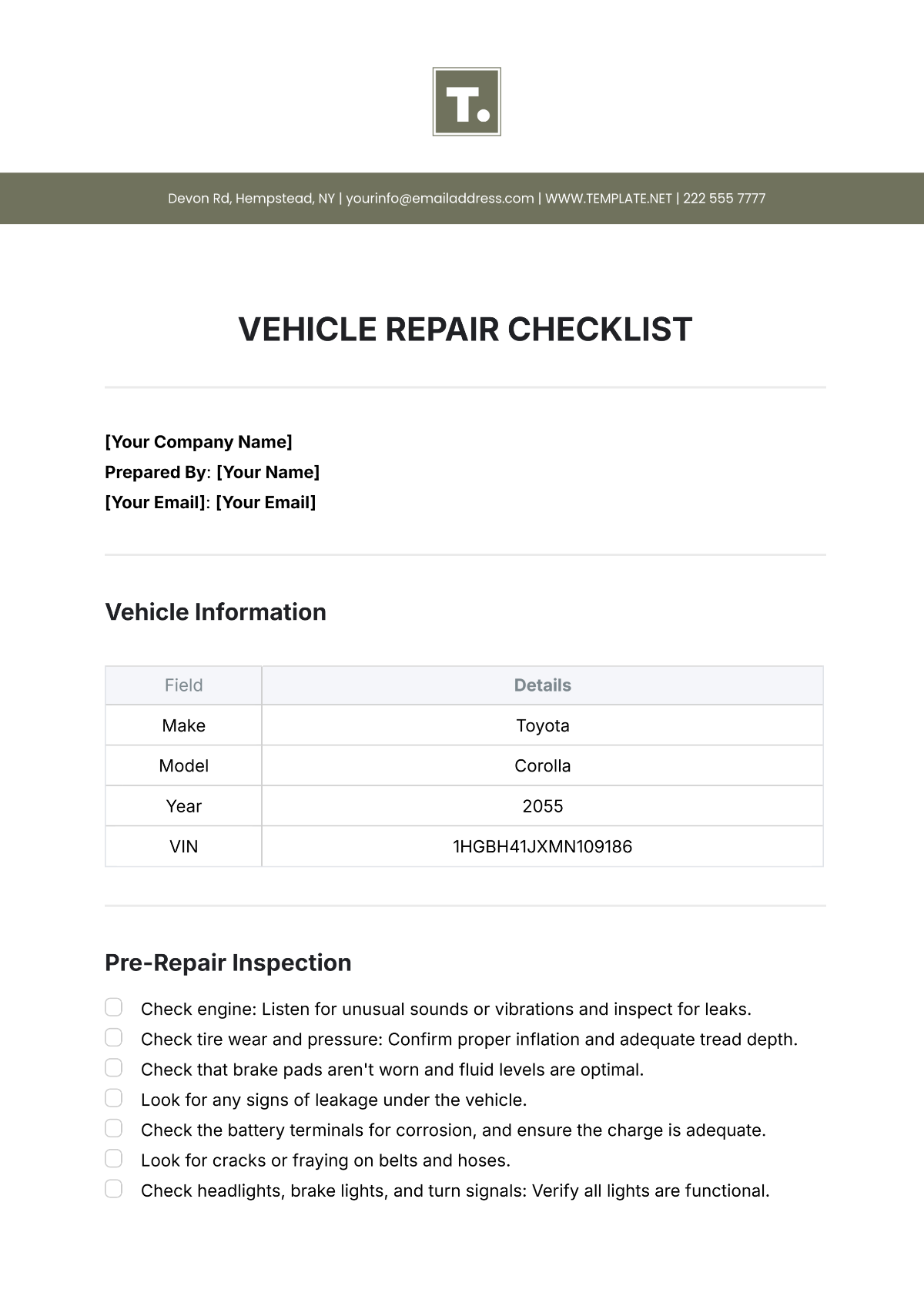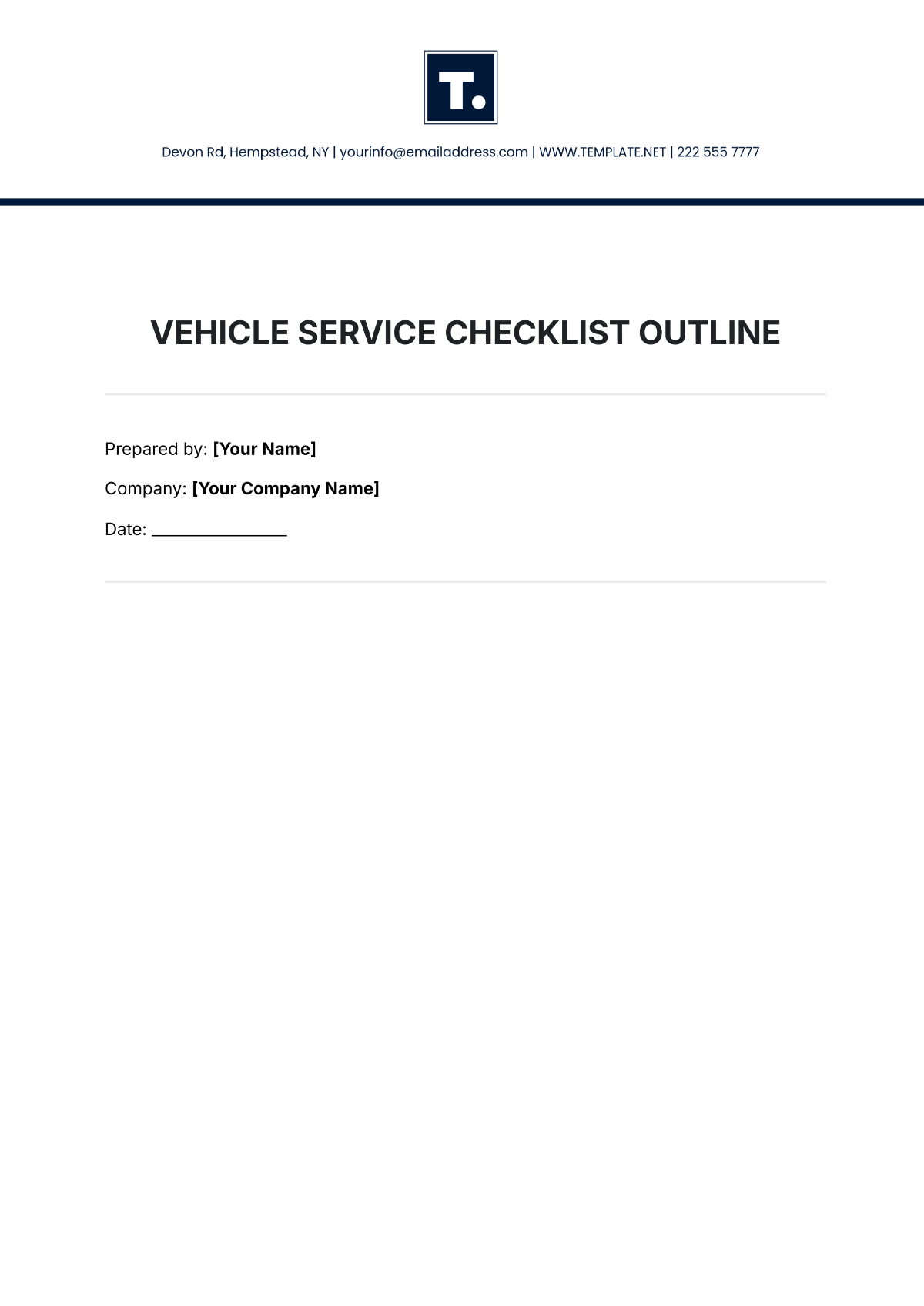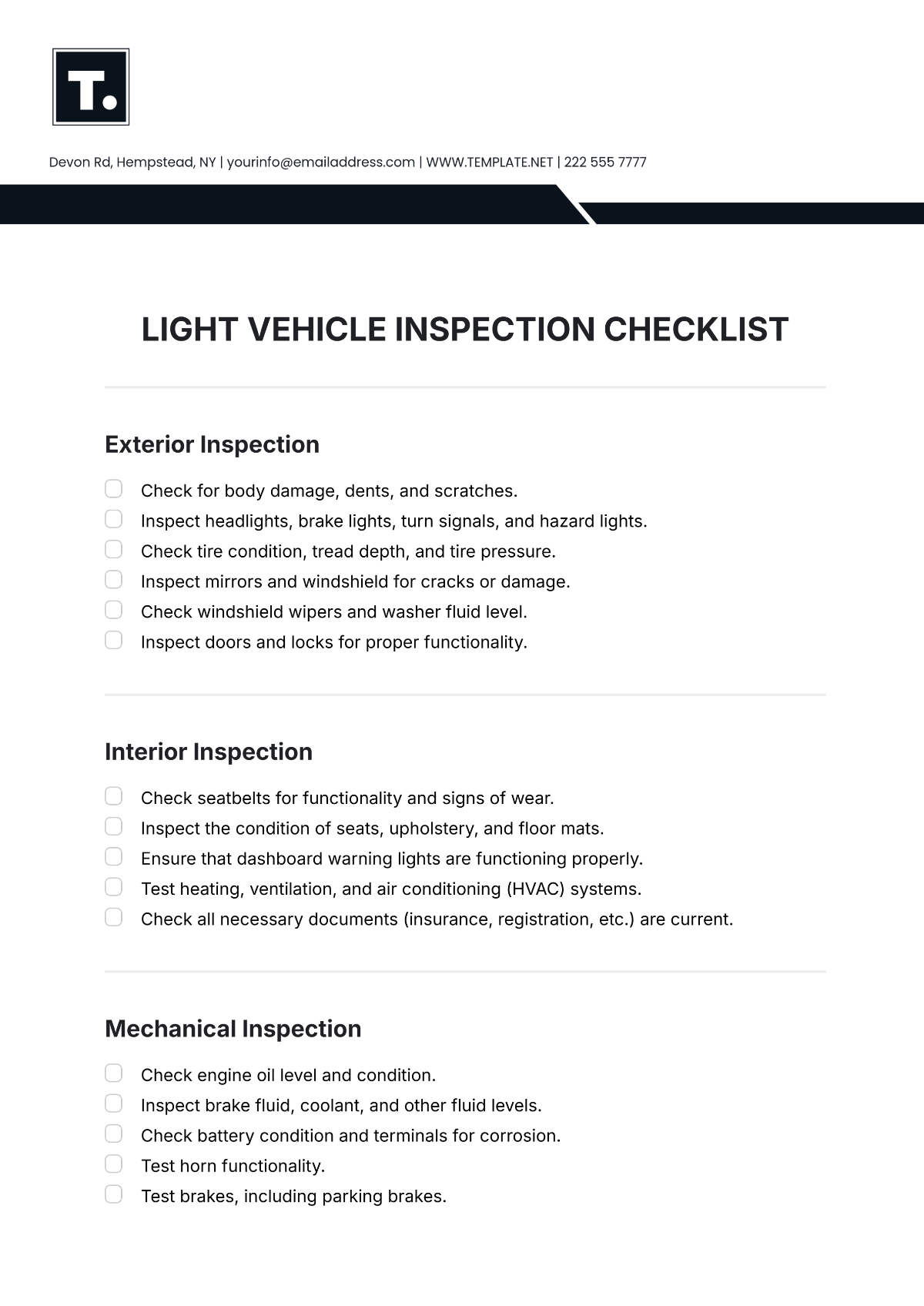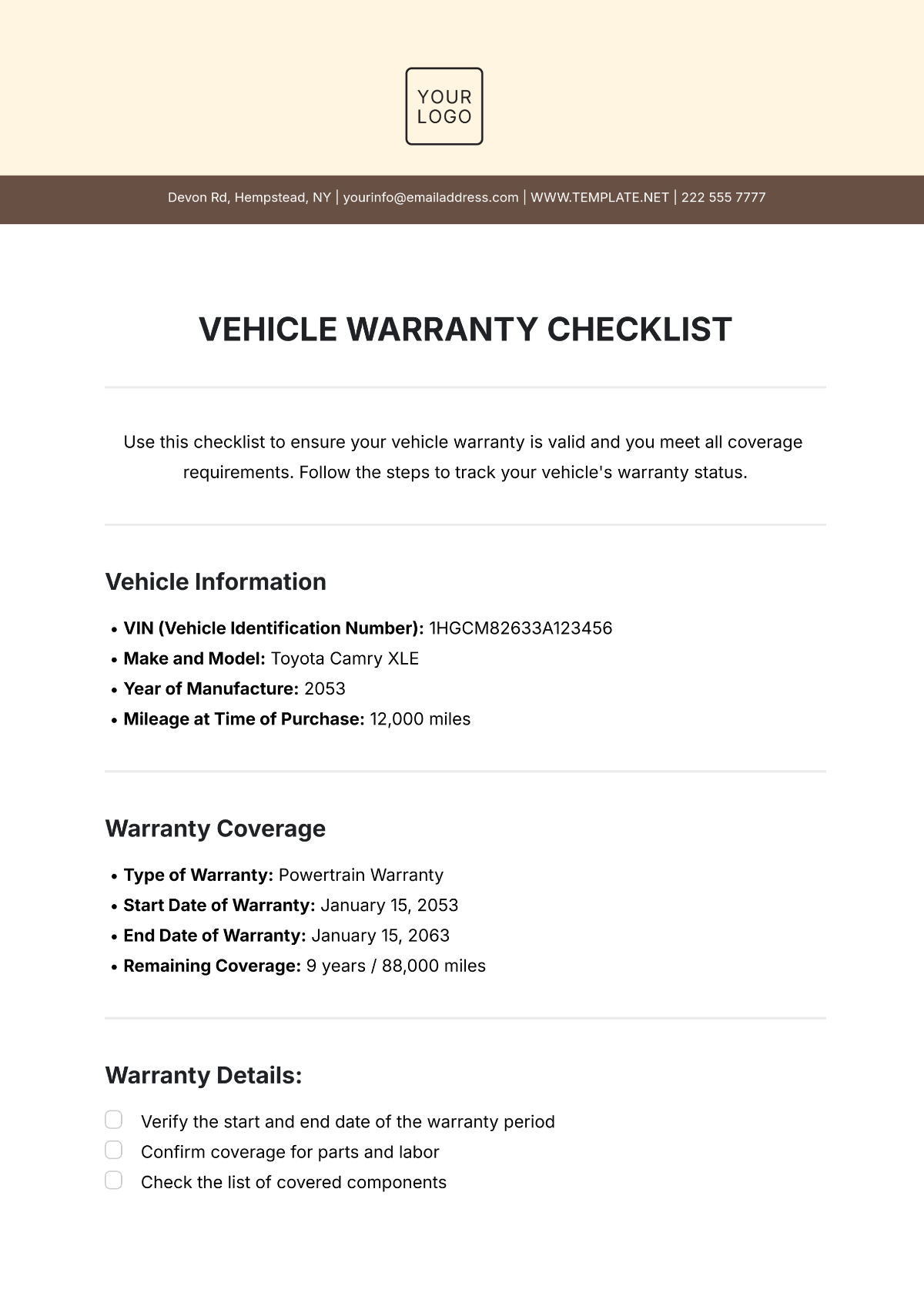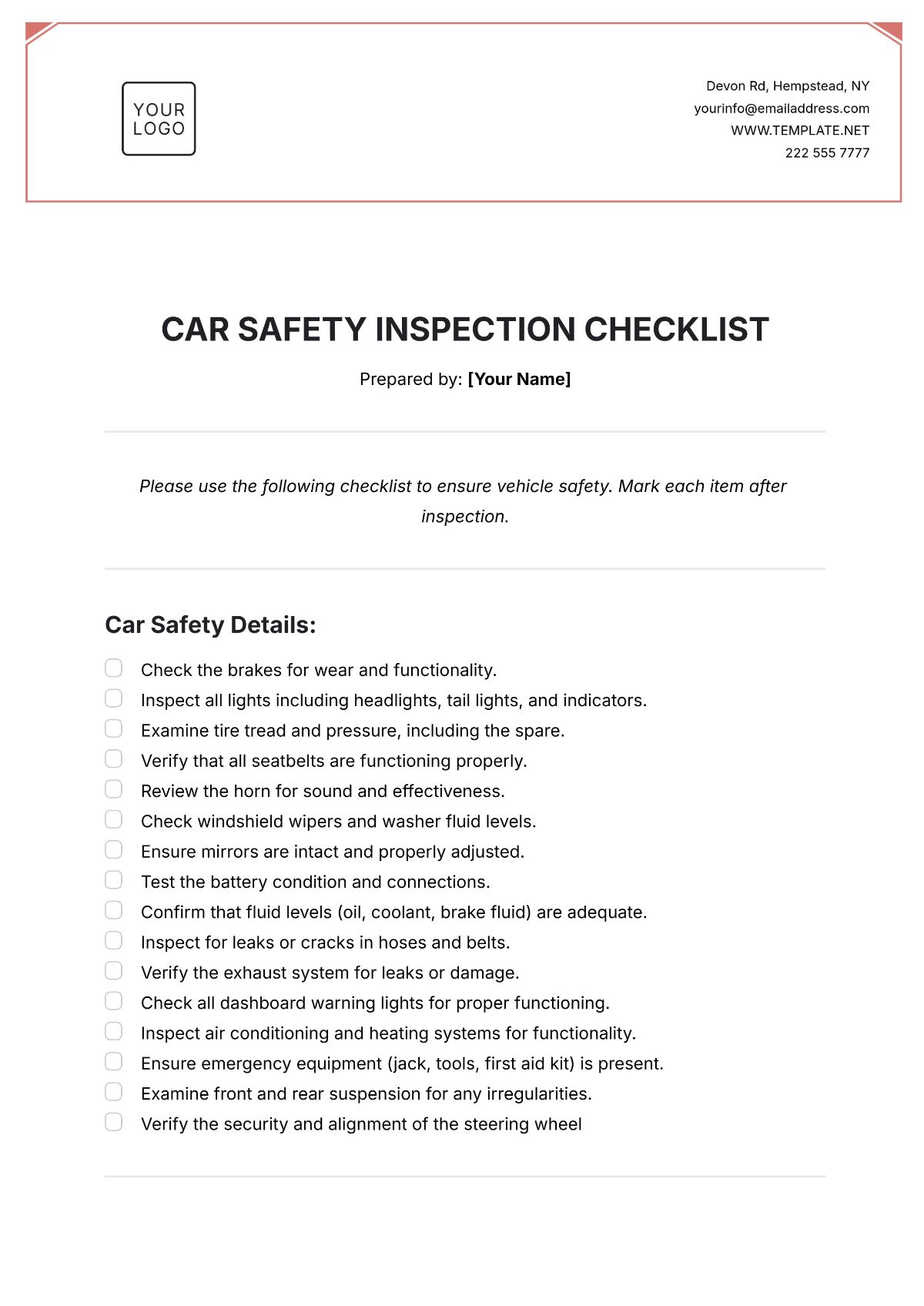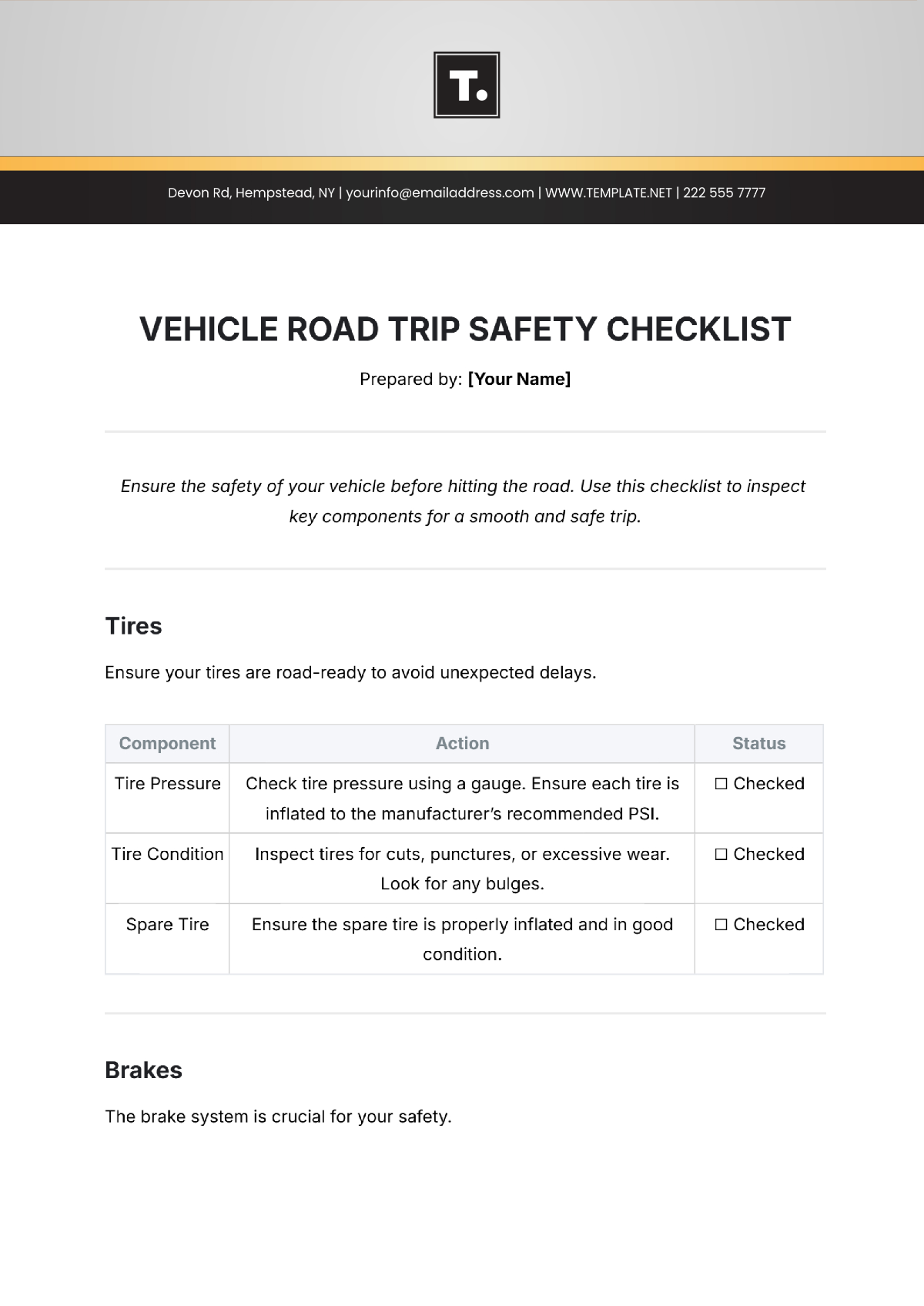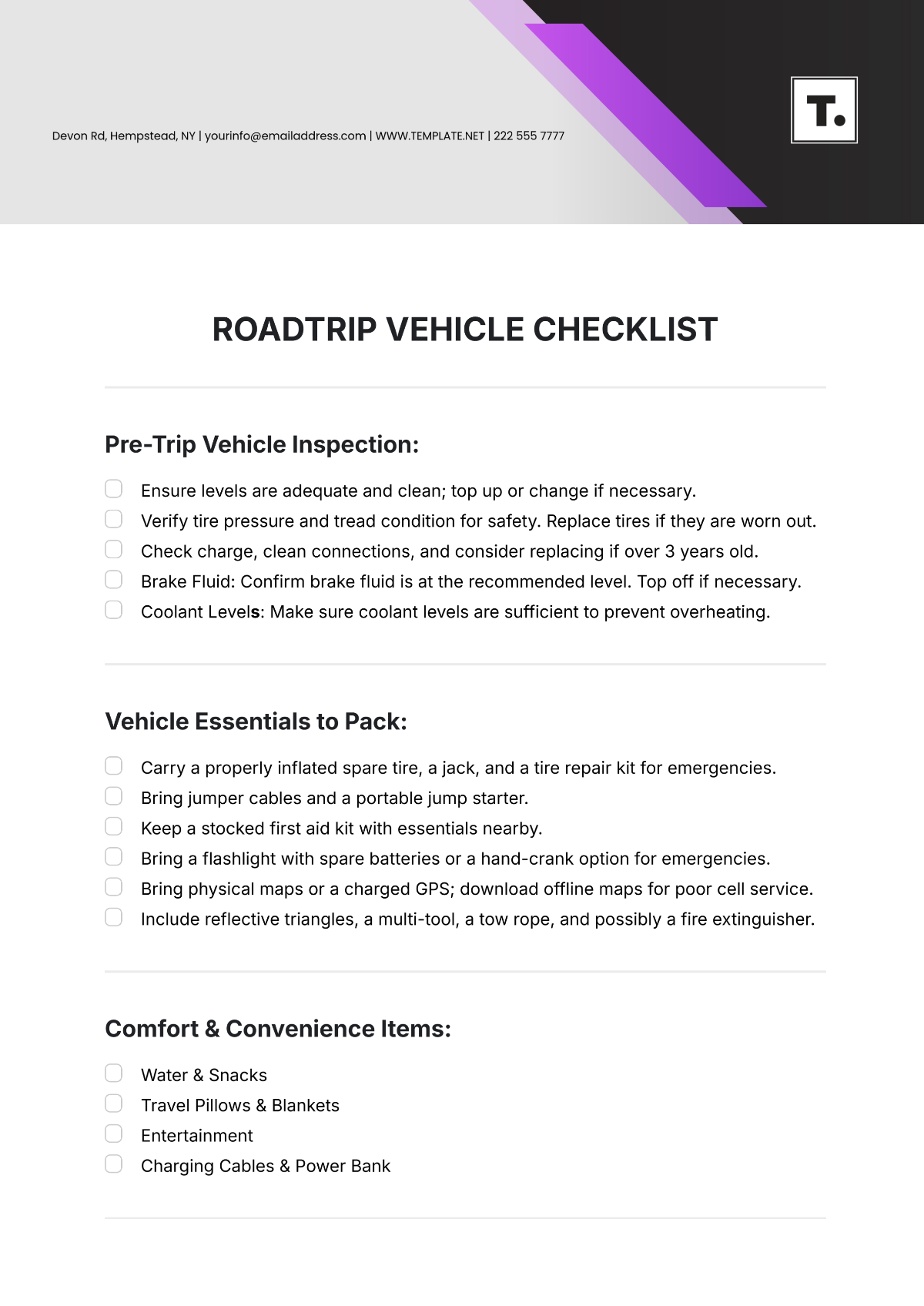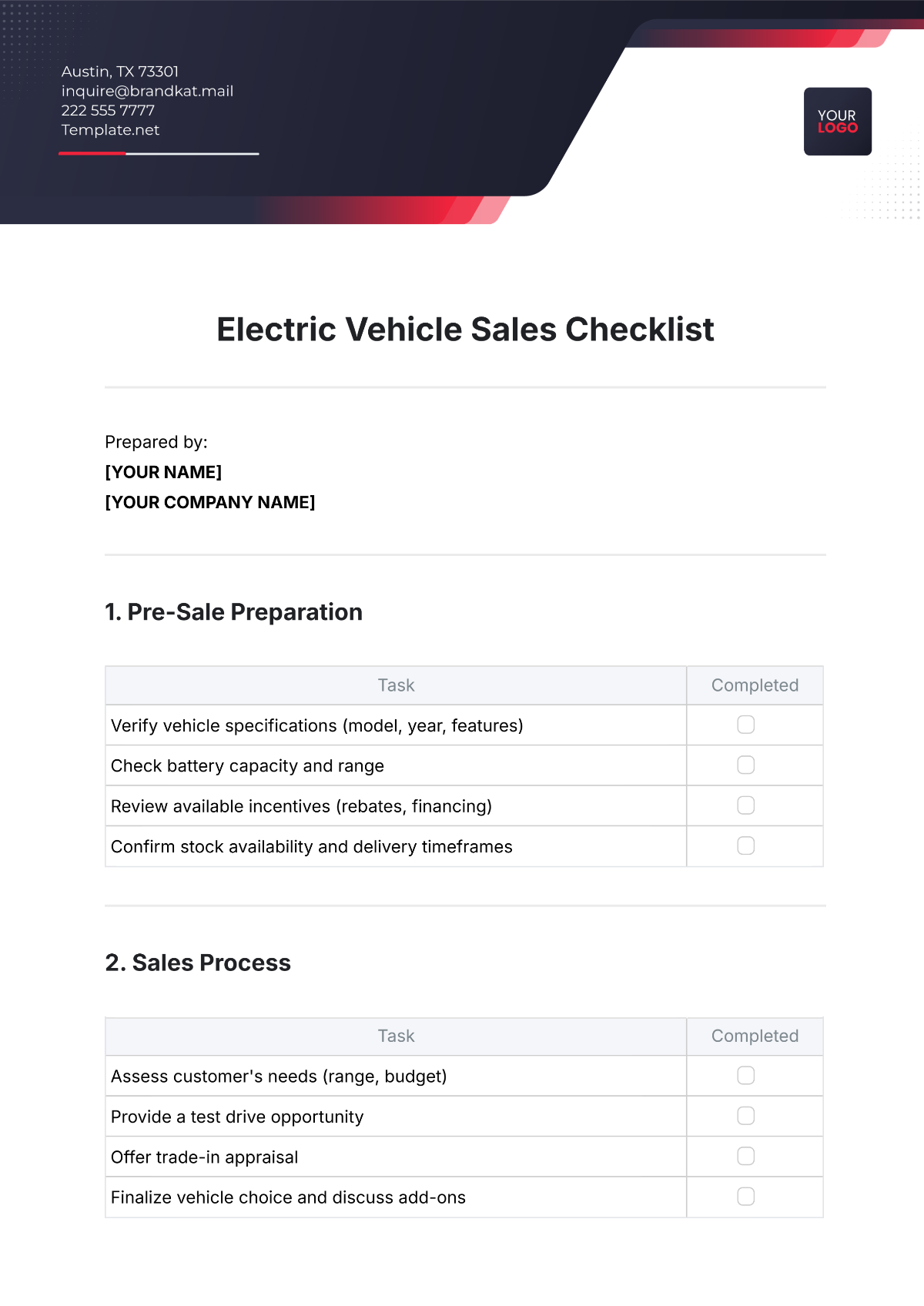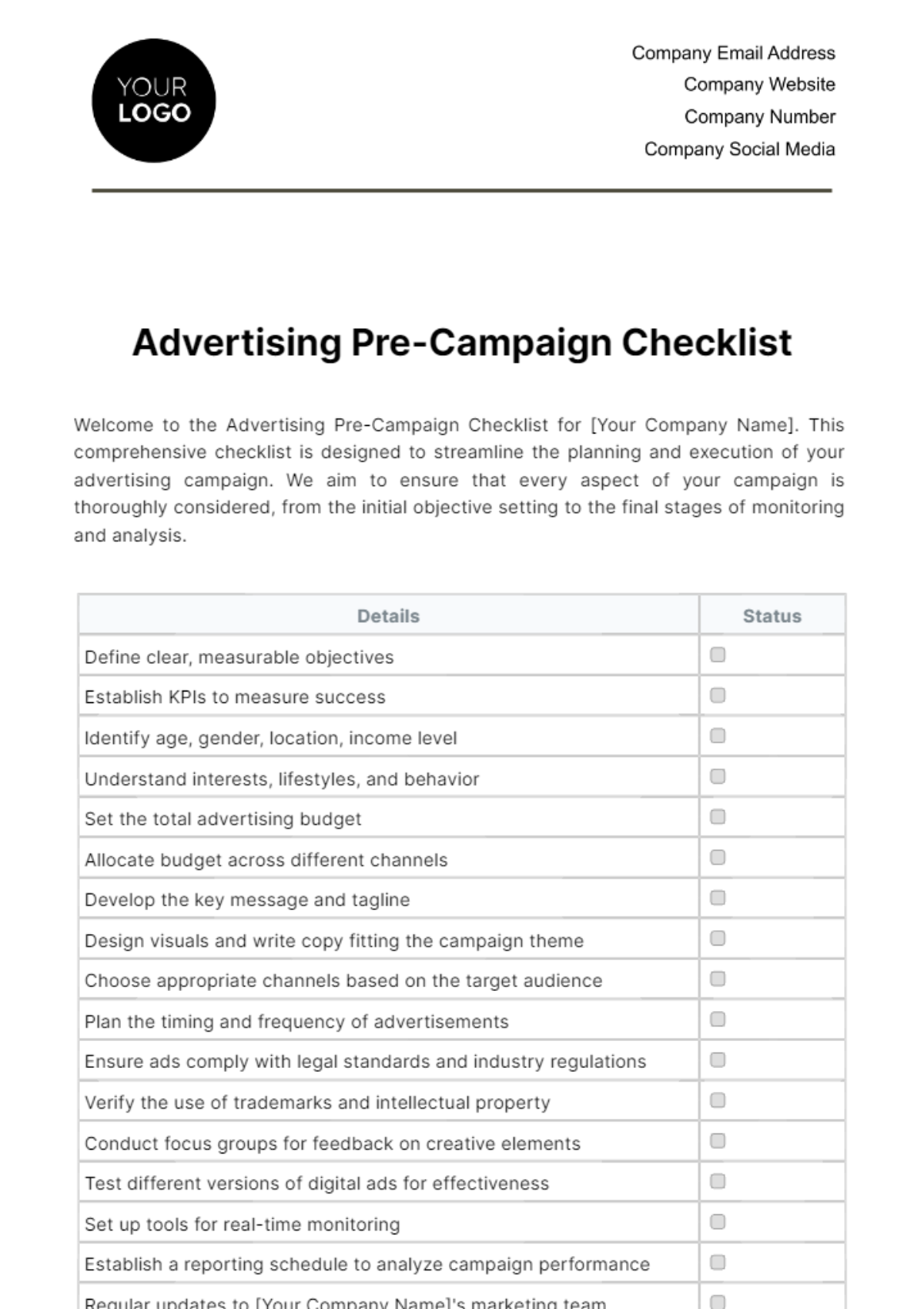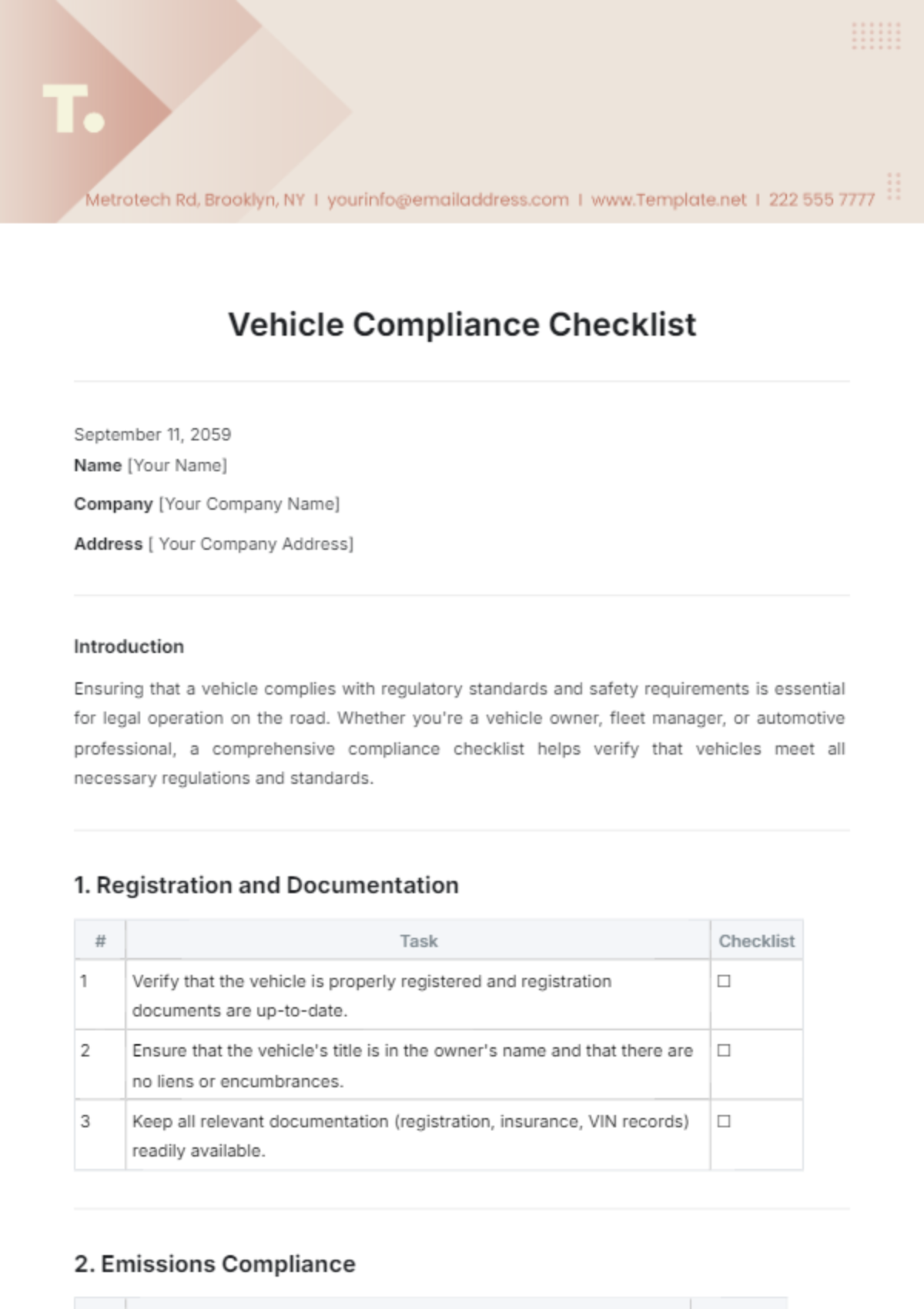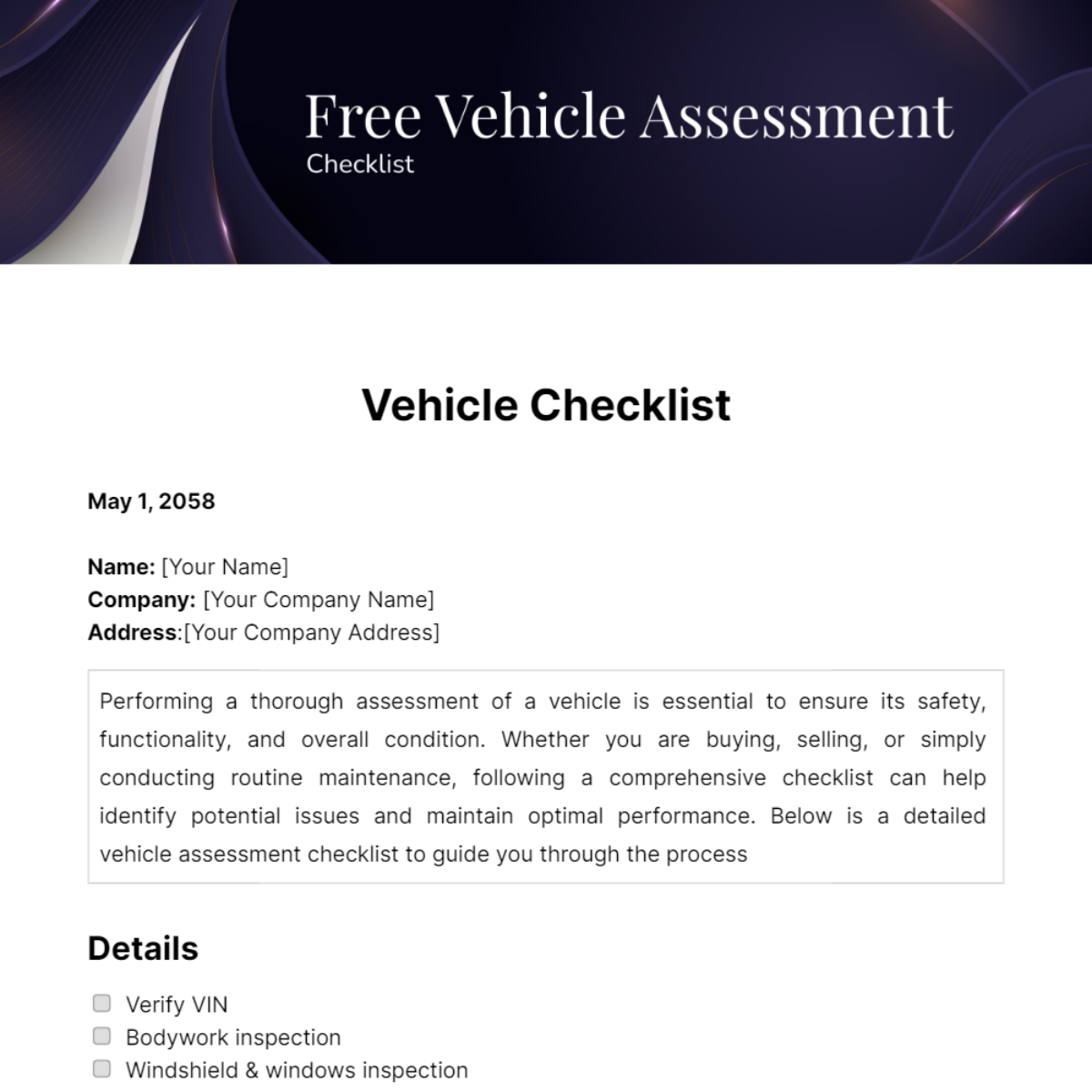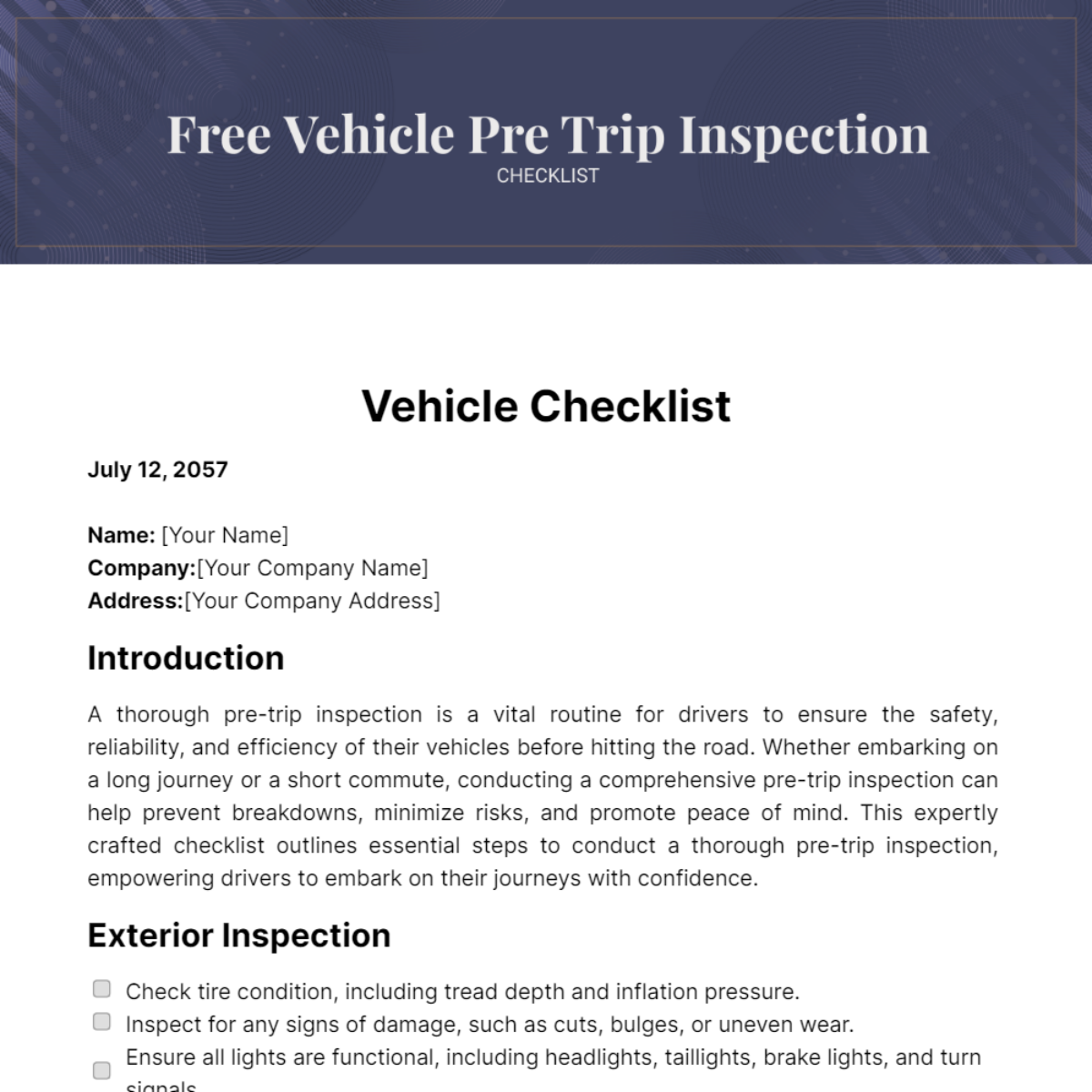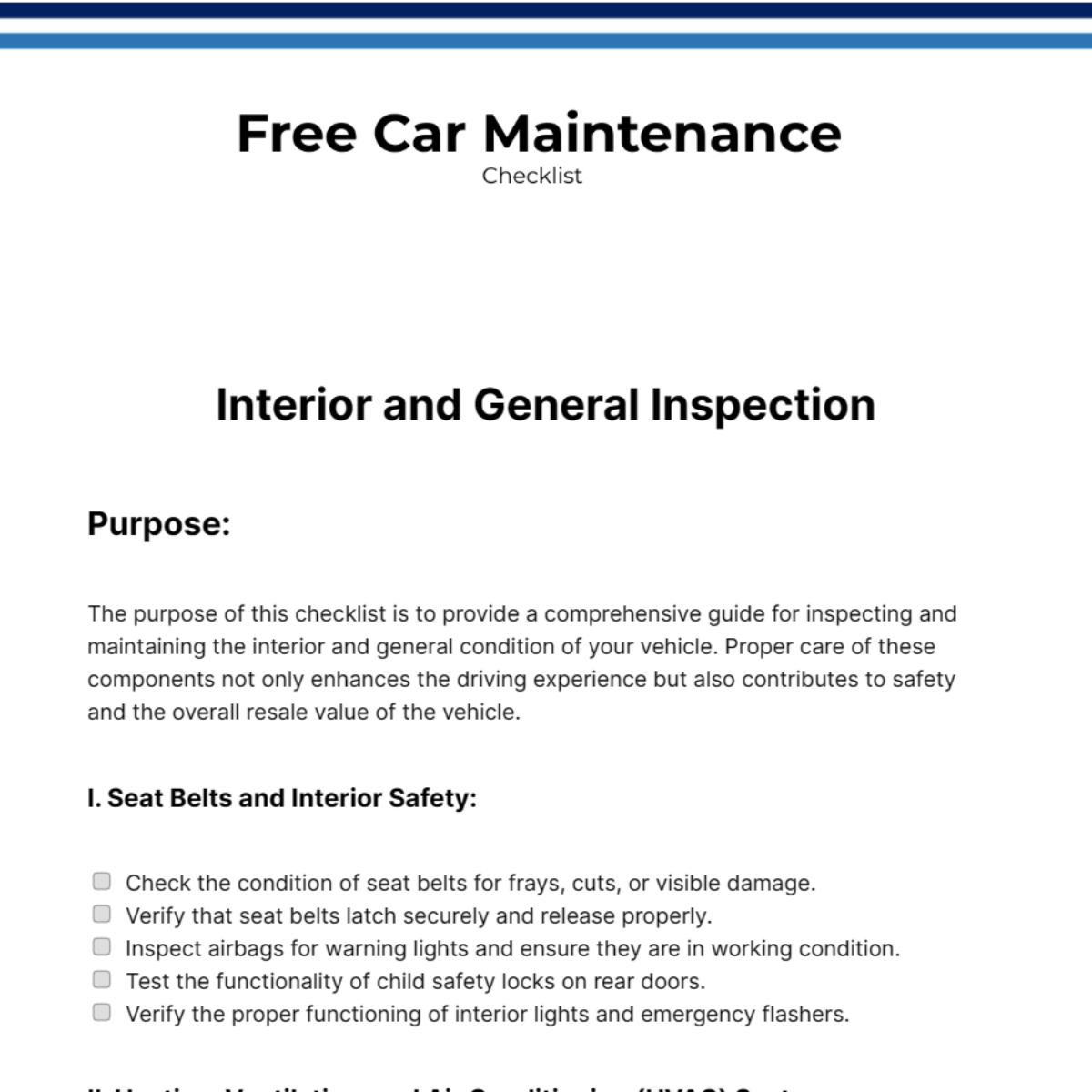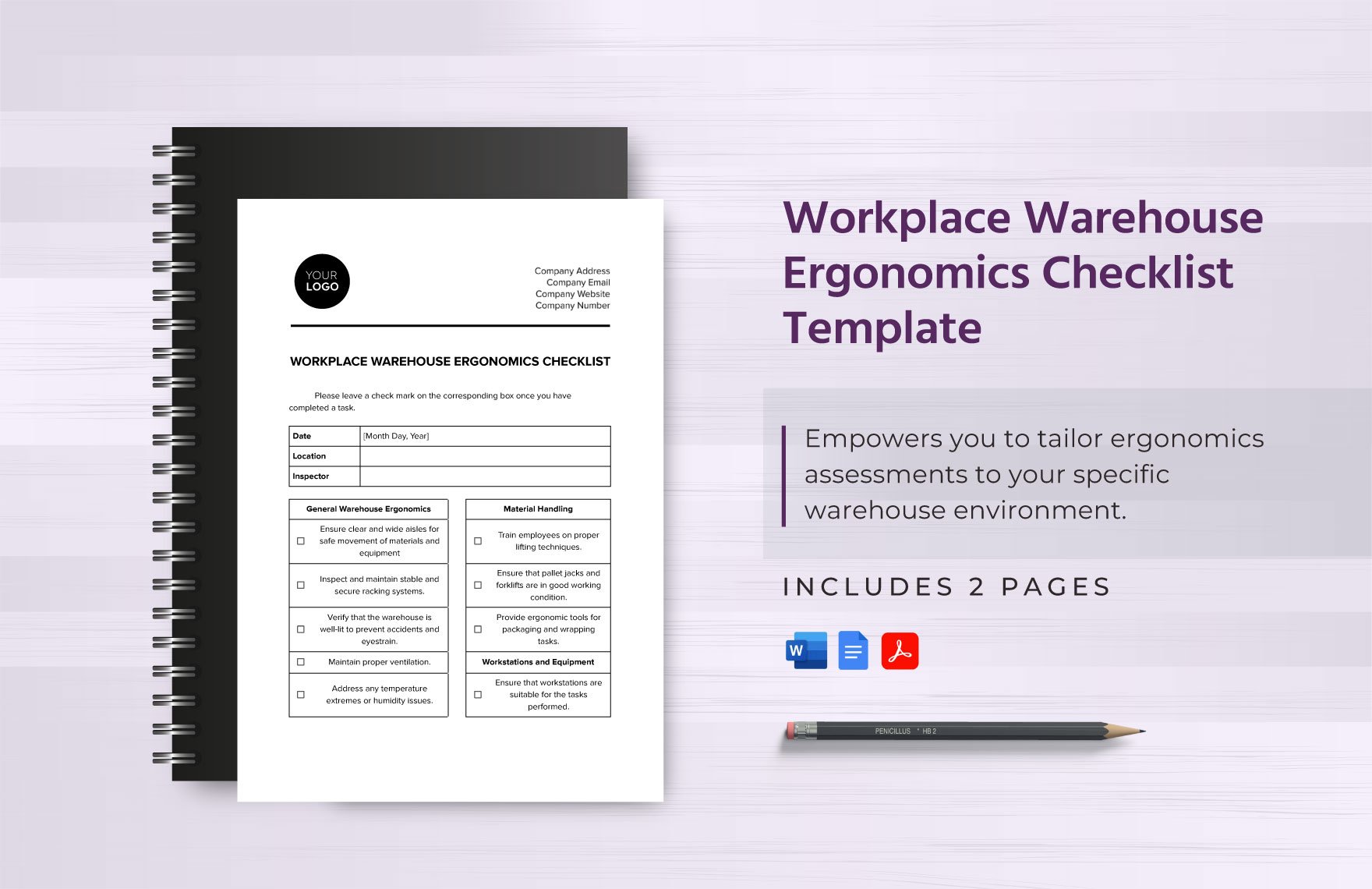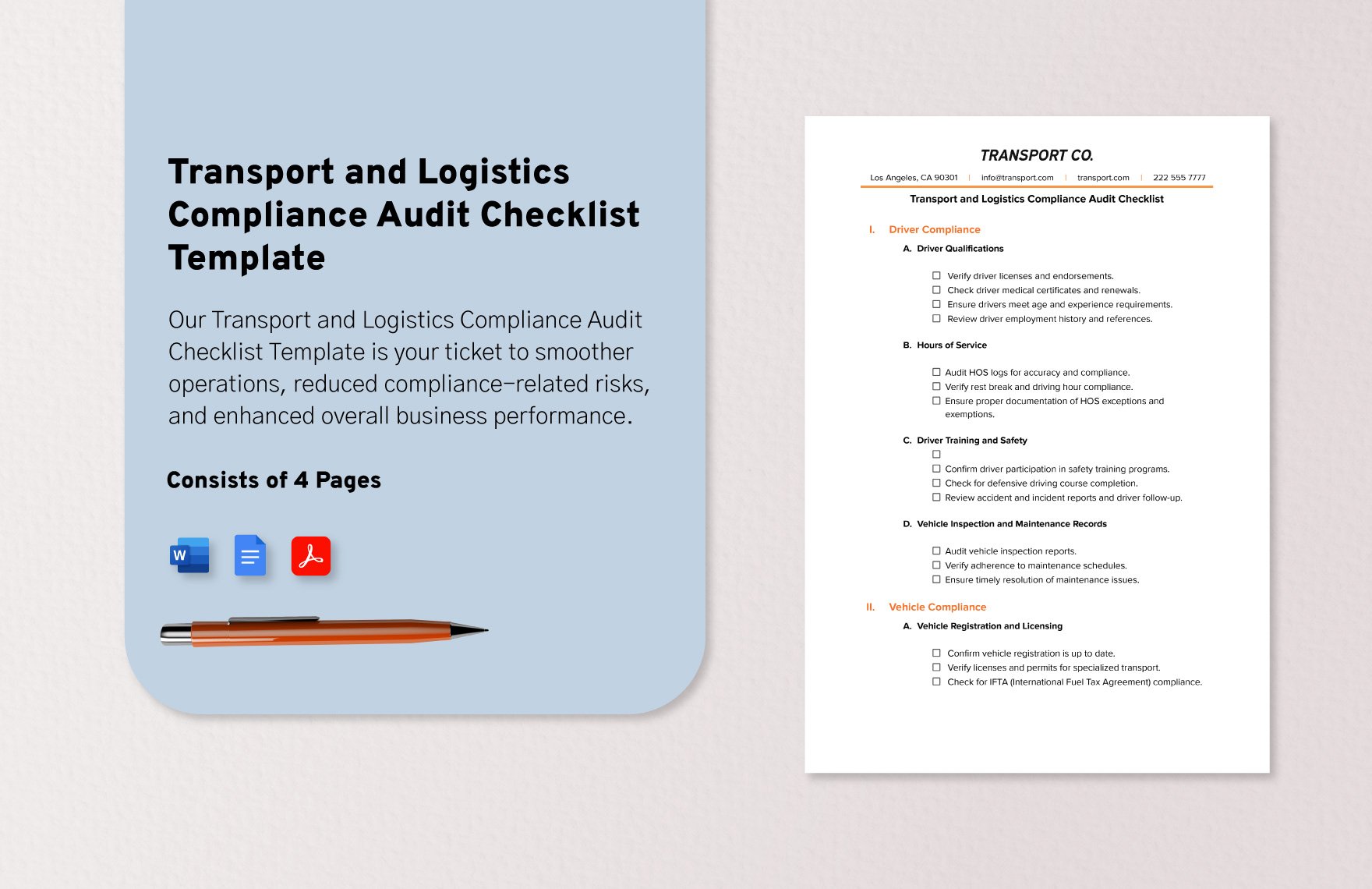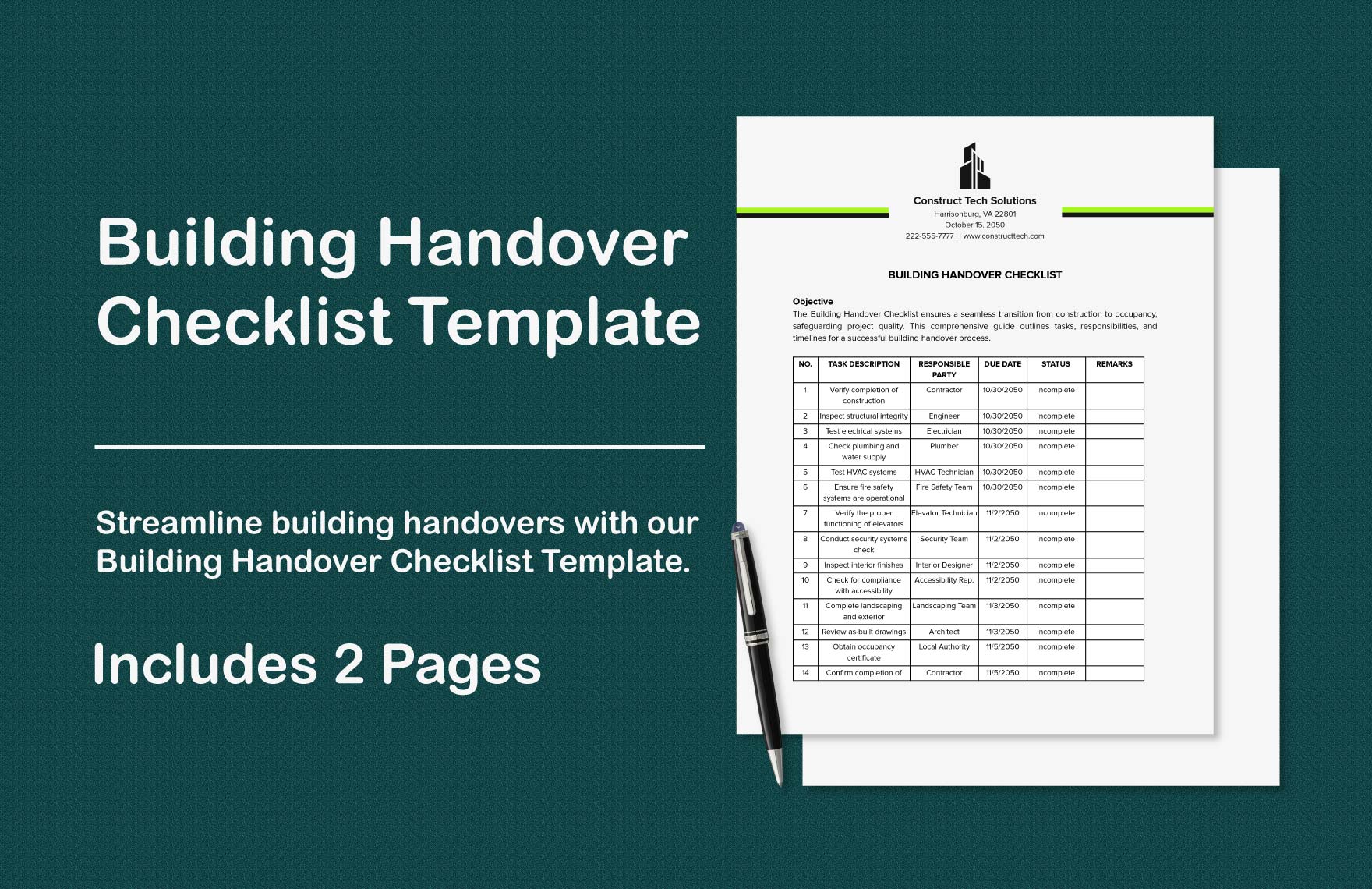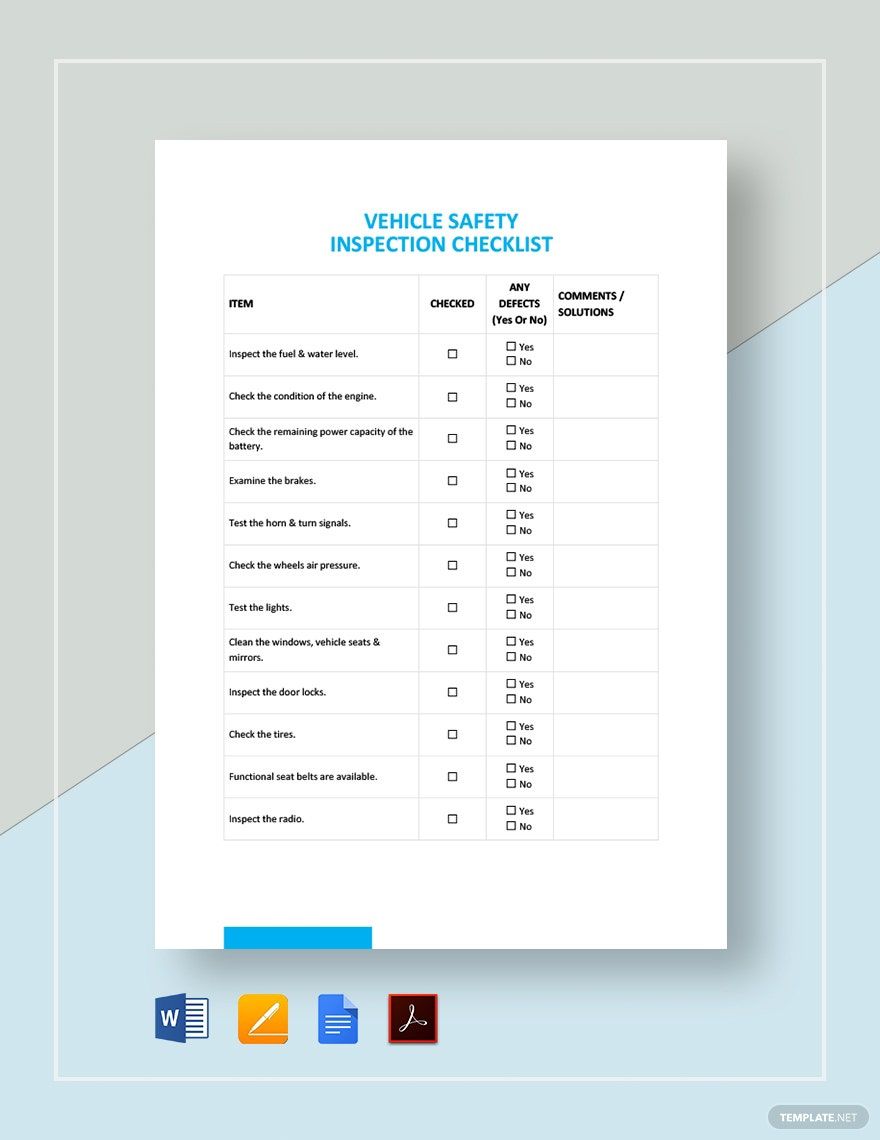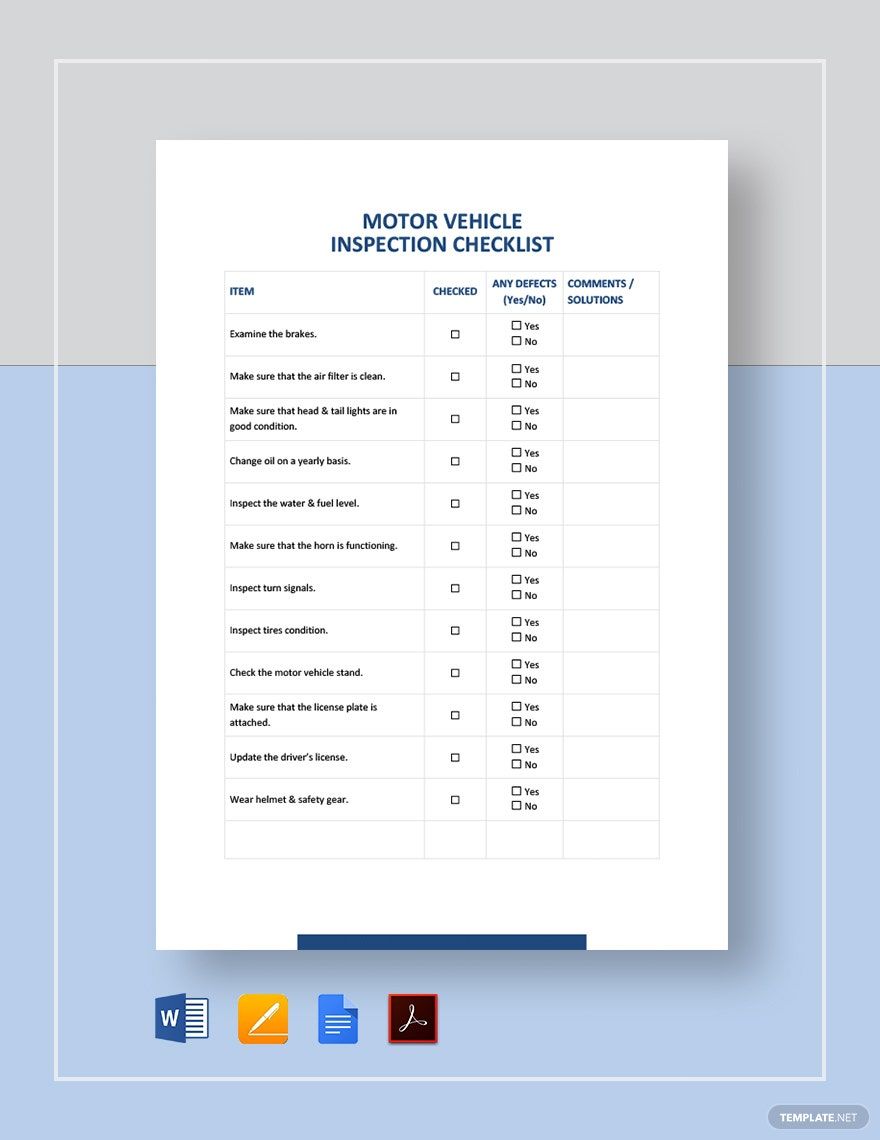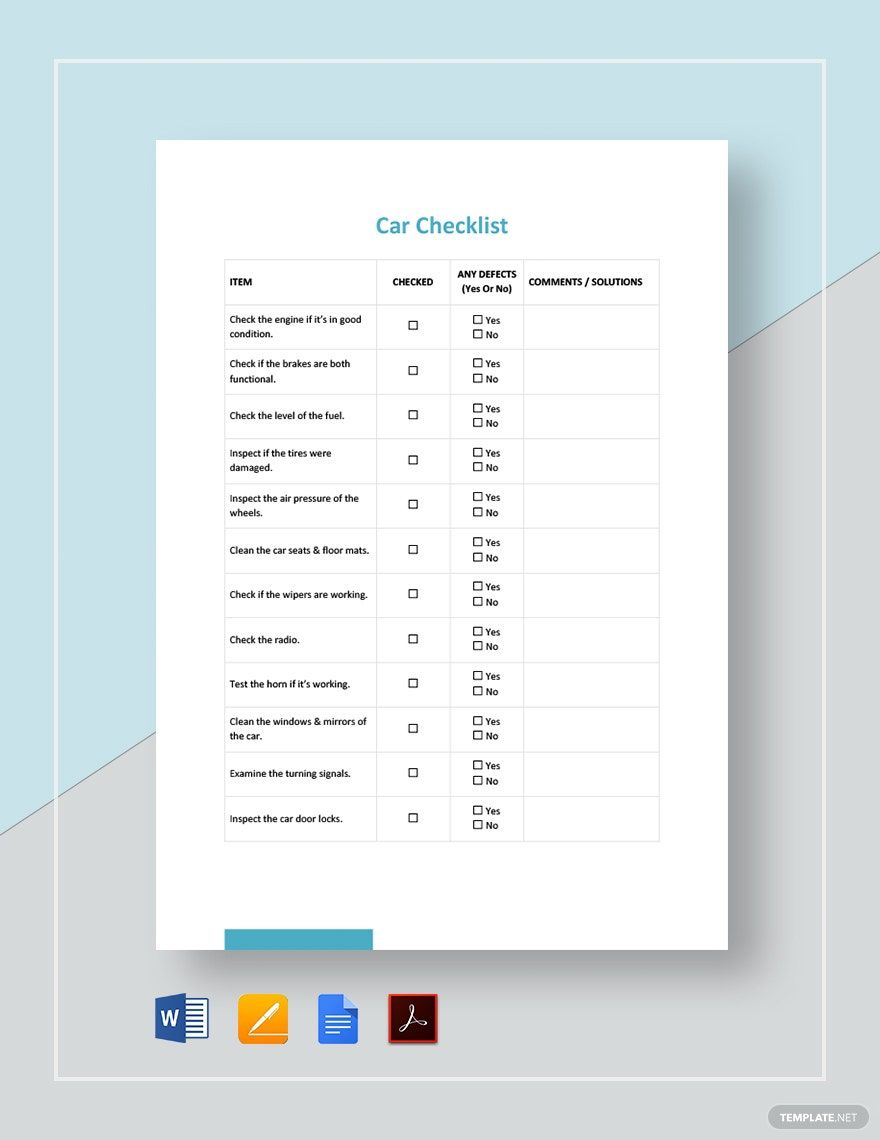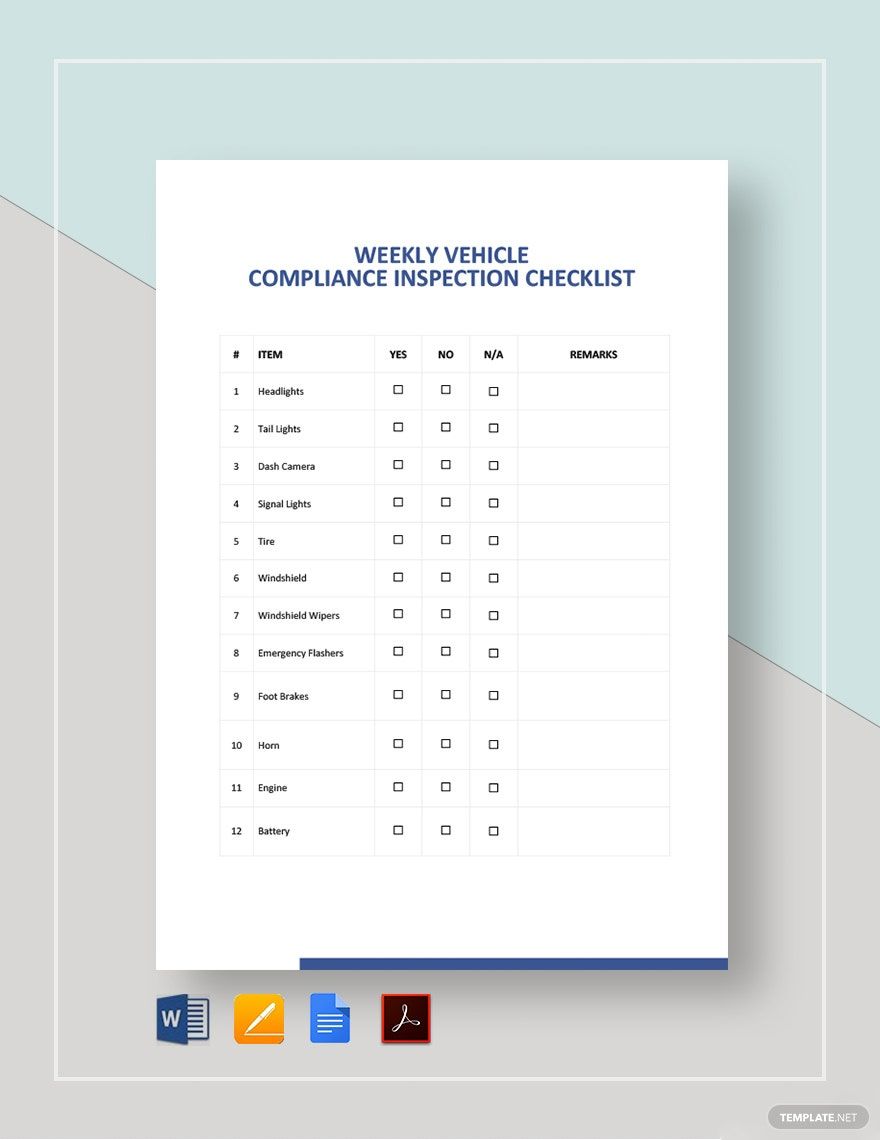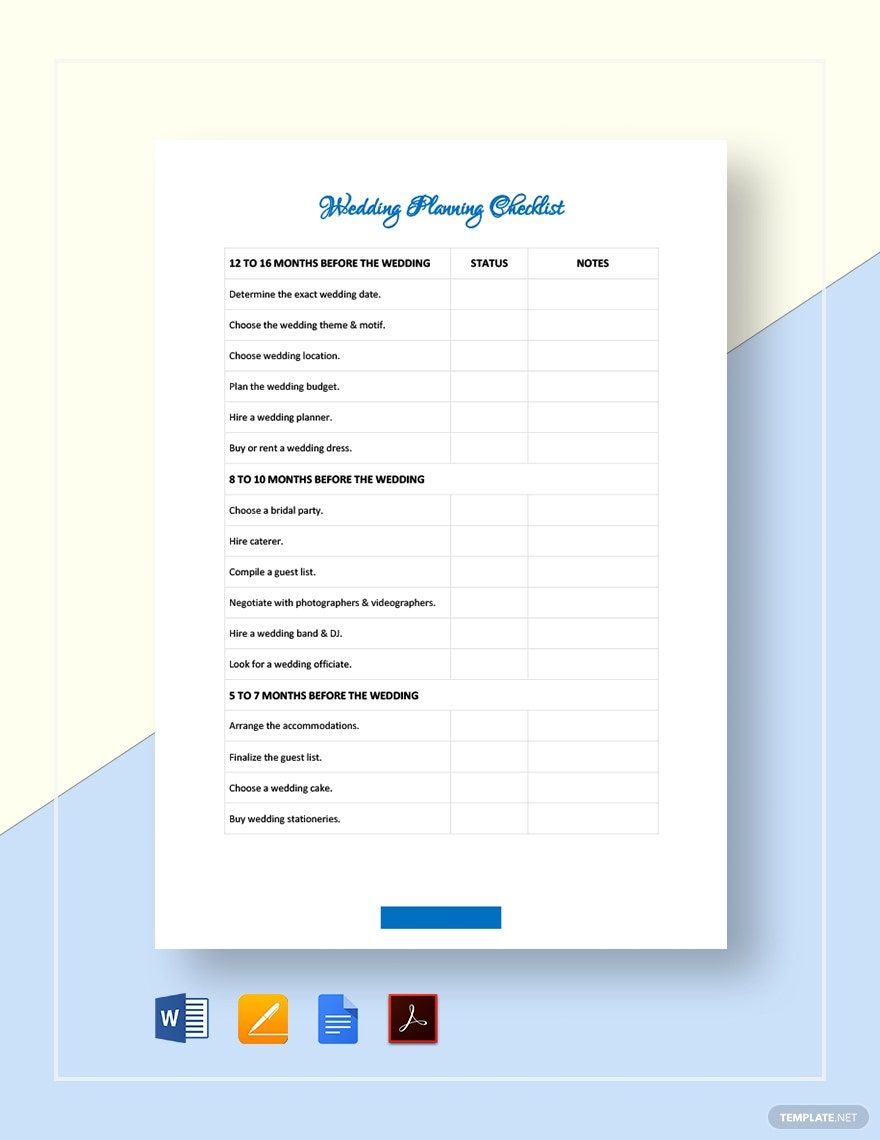Make your Vehicle Safety Inspections Come to Life with Vehicle Checklist Templates from Template.net
Keep your automotive team engaged, ensure thorough checks, and maintain top-notch vehicle safety with Vehicle Checklist Templates from Template.net. Designed for automotive professionals and enthusiasts alike, these templates help you achieve comprehensive vehicle inspections with ease and precision. Whether you're managing a fleet and need a robust process for regular maintenance checks or if you're a car owner looking to conduct personal safety inspections before a long road trip, these templates have you covered. Key details like criteria for inspection, date, and checklist status can be customized to suit your specific requirements. No expert design skills are required to create professional-grade checklists, and print or digital distribution options make it easy to share results with your team or clients.
Discover the many Vehicle Checklist Templates we have on hand, tailored to suit any type of automobile and inspection requirement. Begin by selecting a template that matches your needs; effortlessly swap in your specific inspection criteria, tweak colors and fonts to match your brand or personal preference. Enhance your checklists by dragging and dropping icons or graphics, adding animated highlights for digital use, or using AI-powered text tools for precision language. The possibilities are endless and entirely skill-free, making it a rewarding experience to create detailed checklists without the hassle. With regularly updated templates and new designs added weekly, you're always equipped with the latest and most efficient tools. When you're finished, download your checklist or share it via link, print it, or export it for further collaboration or review—ideal for multiple channels and real-time collaboration.
